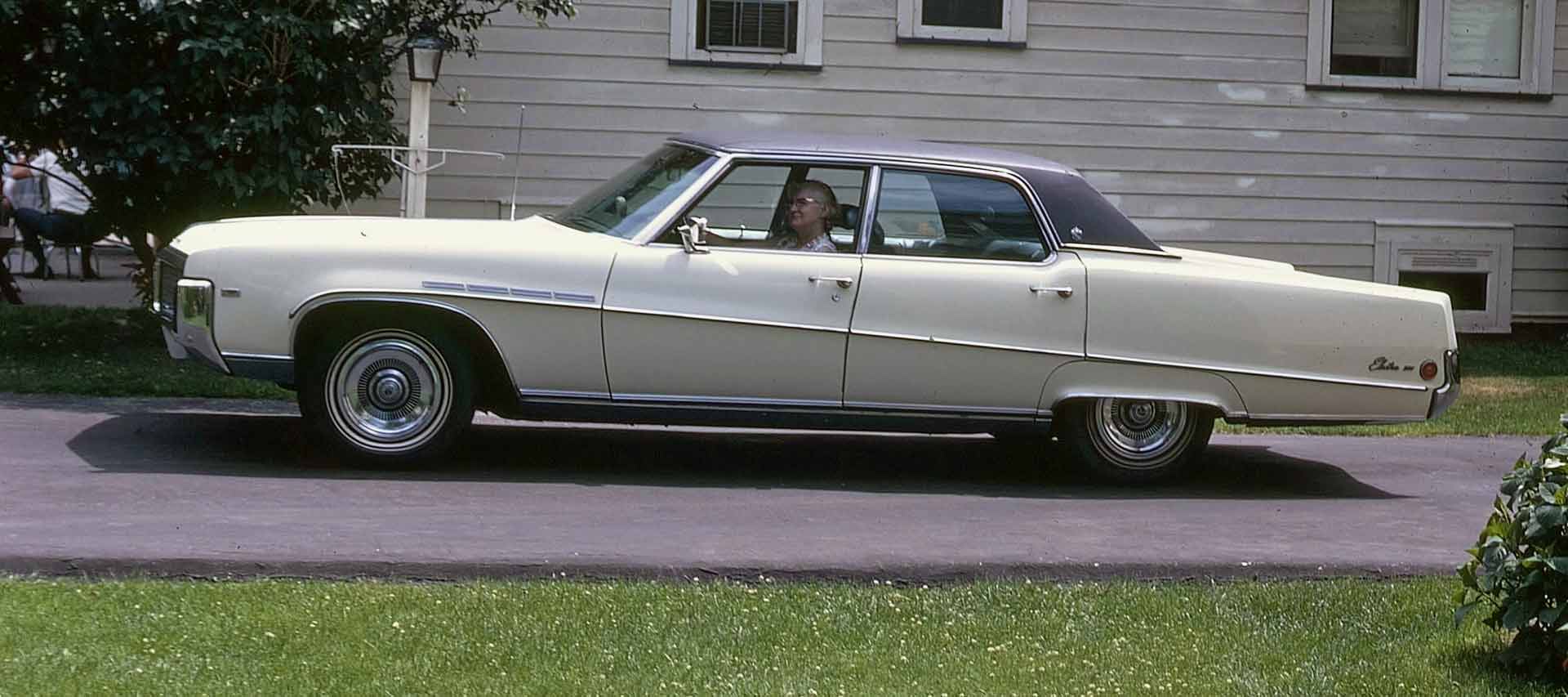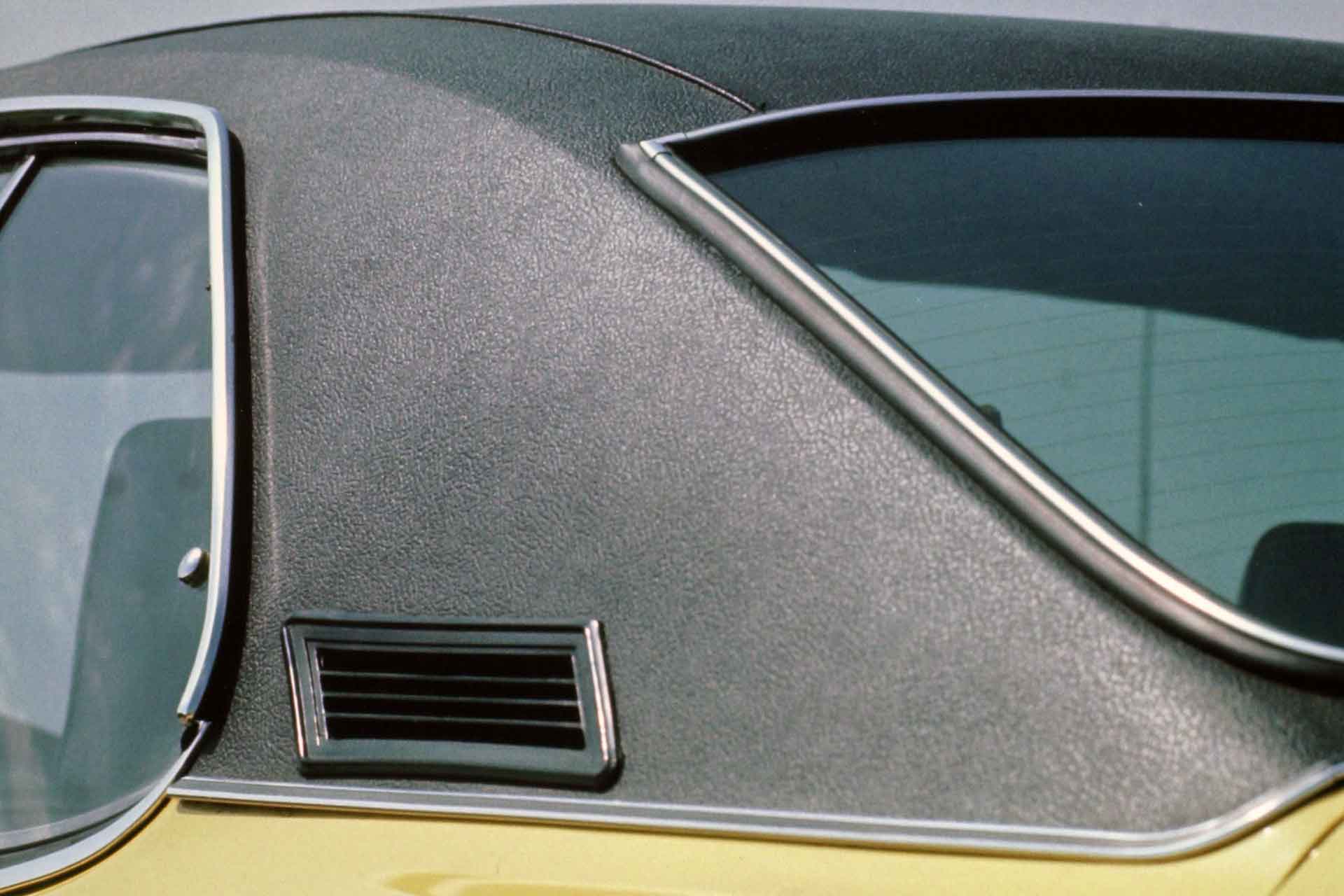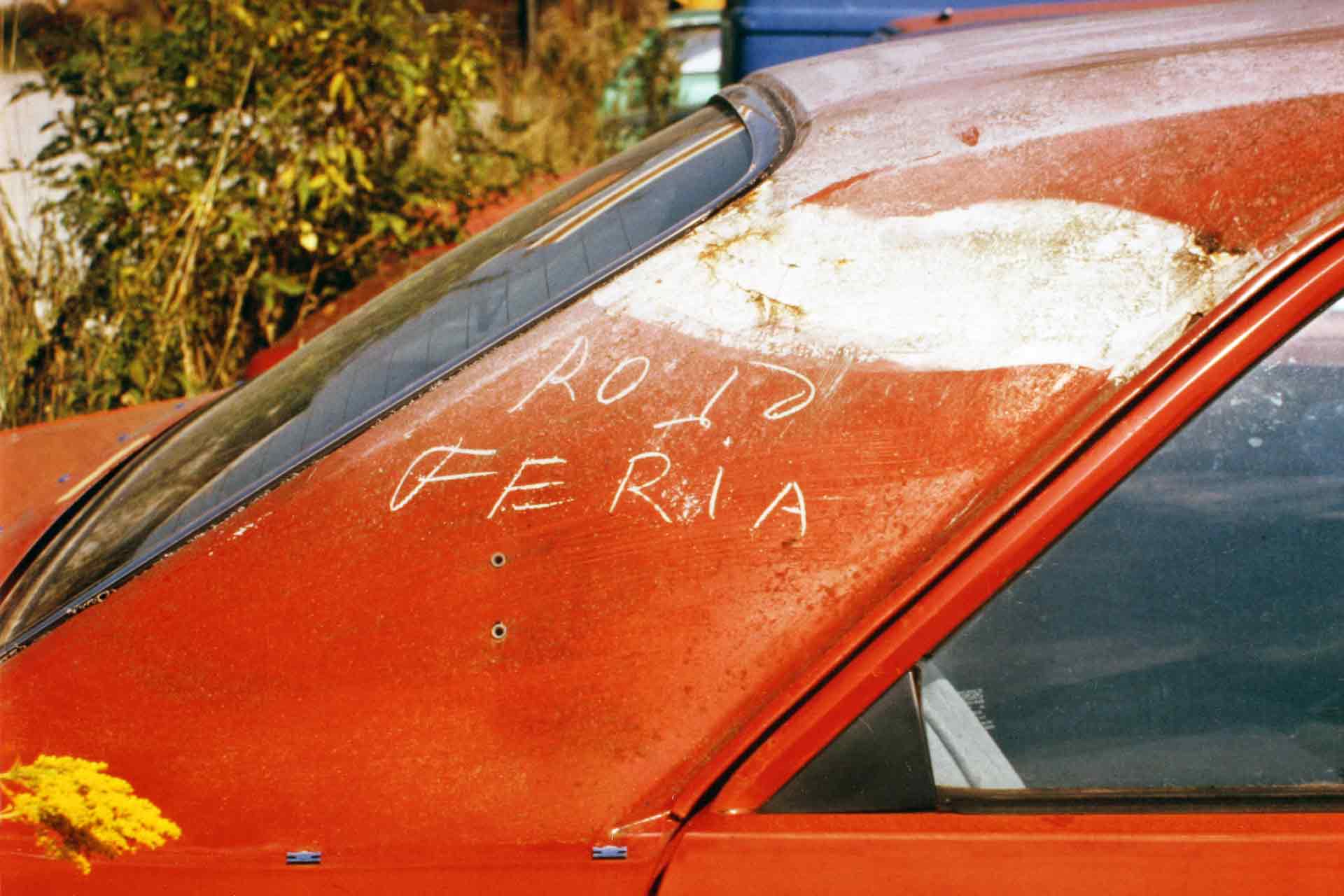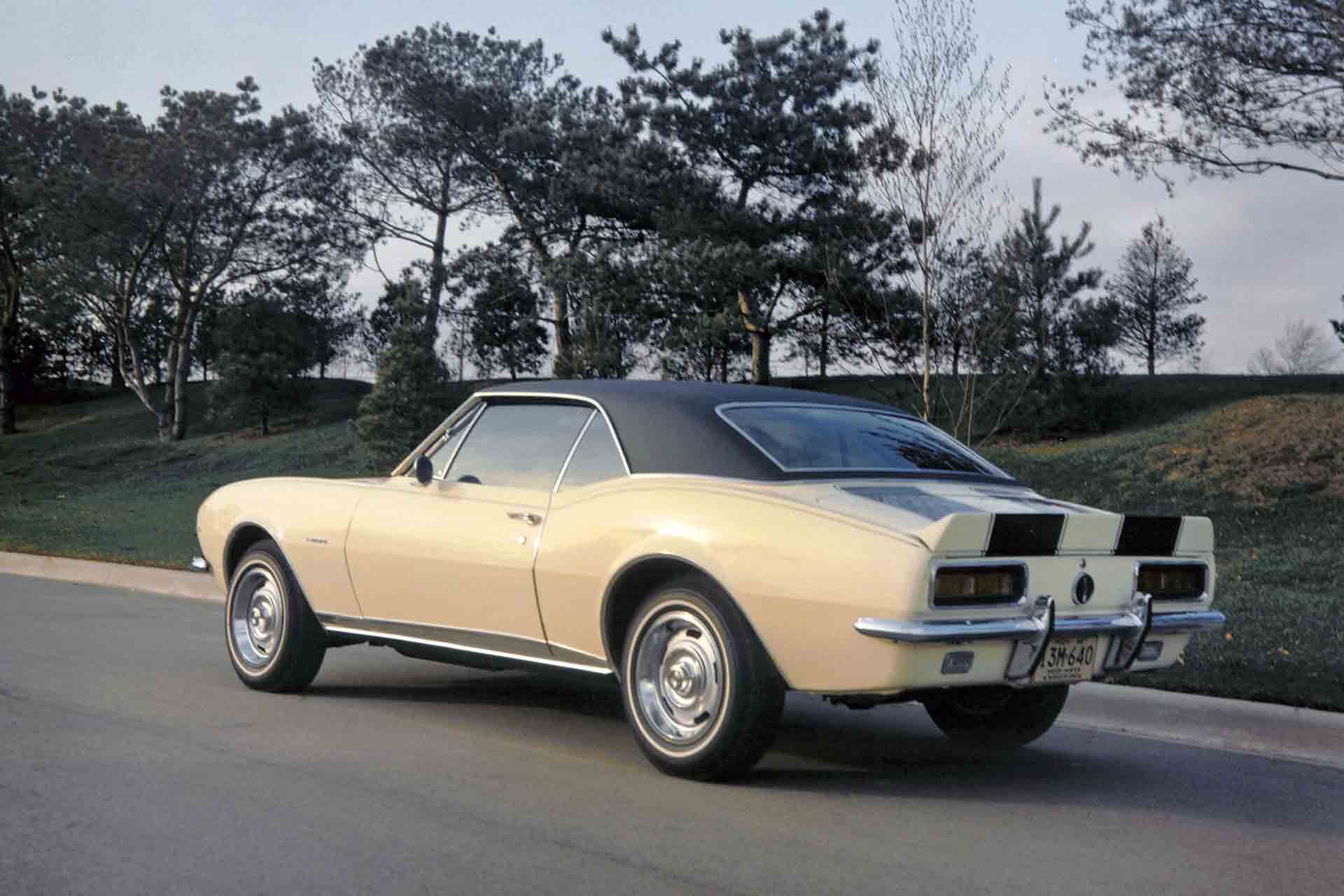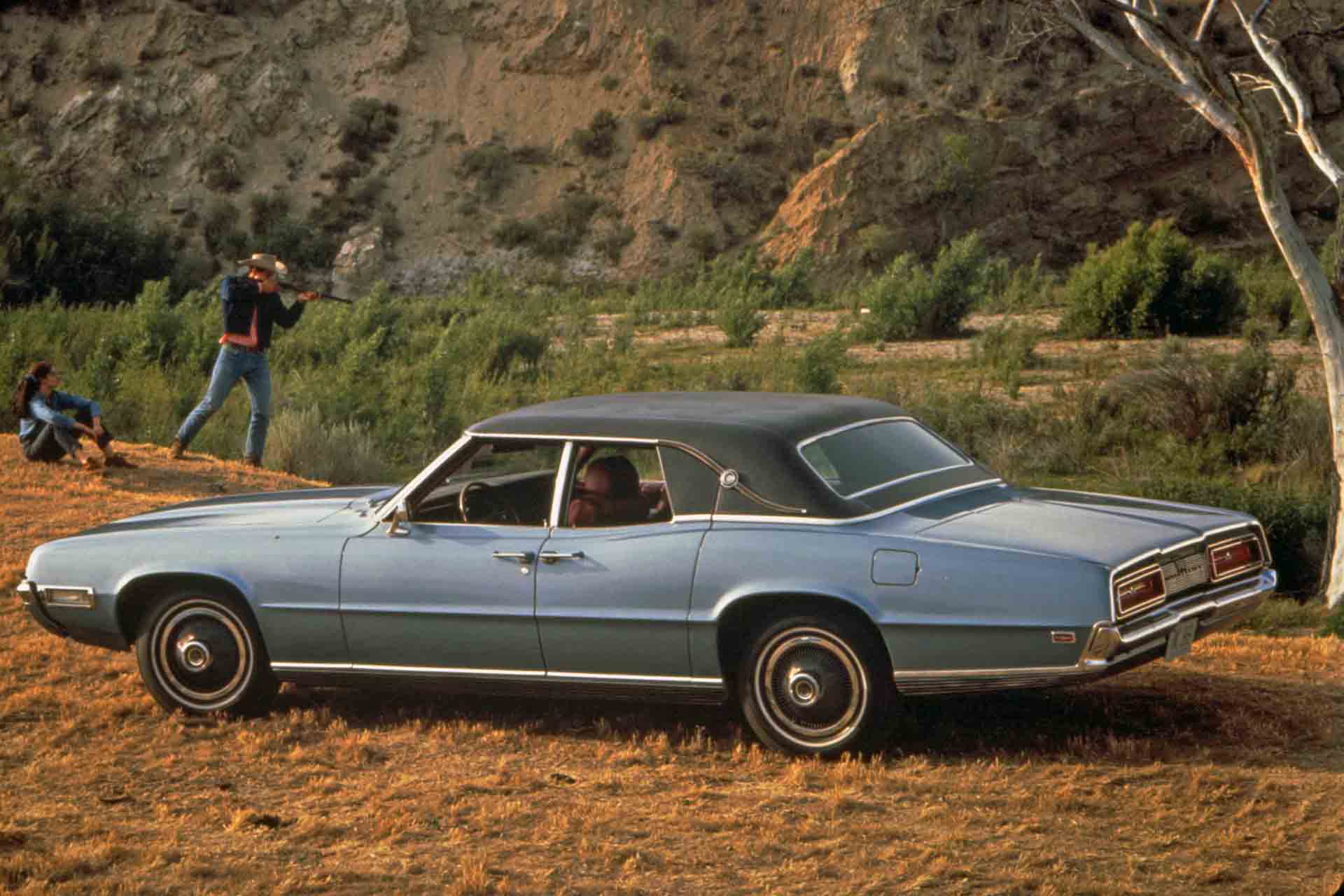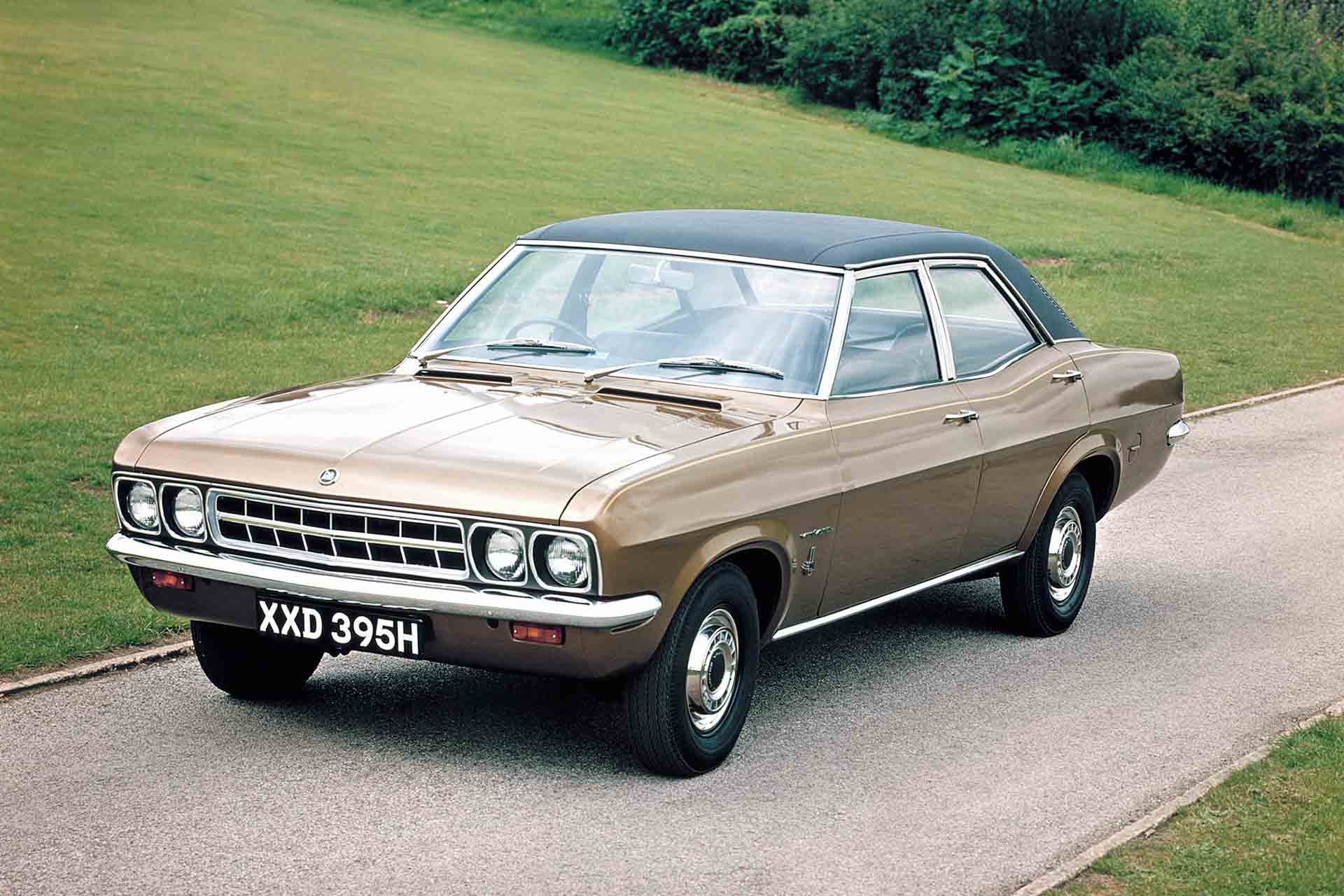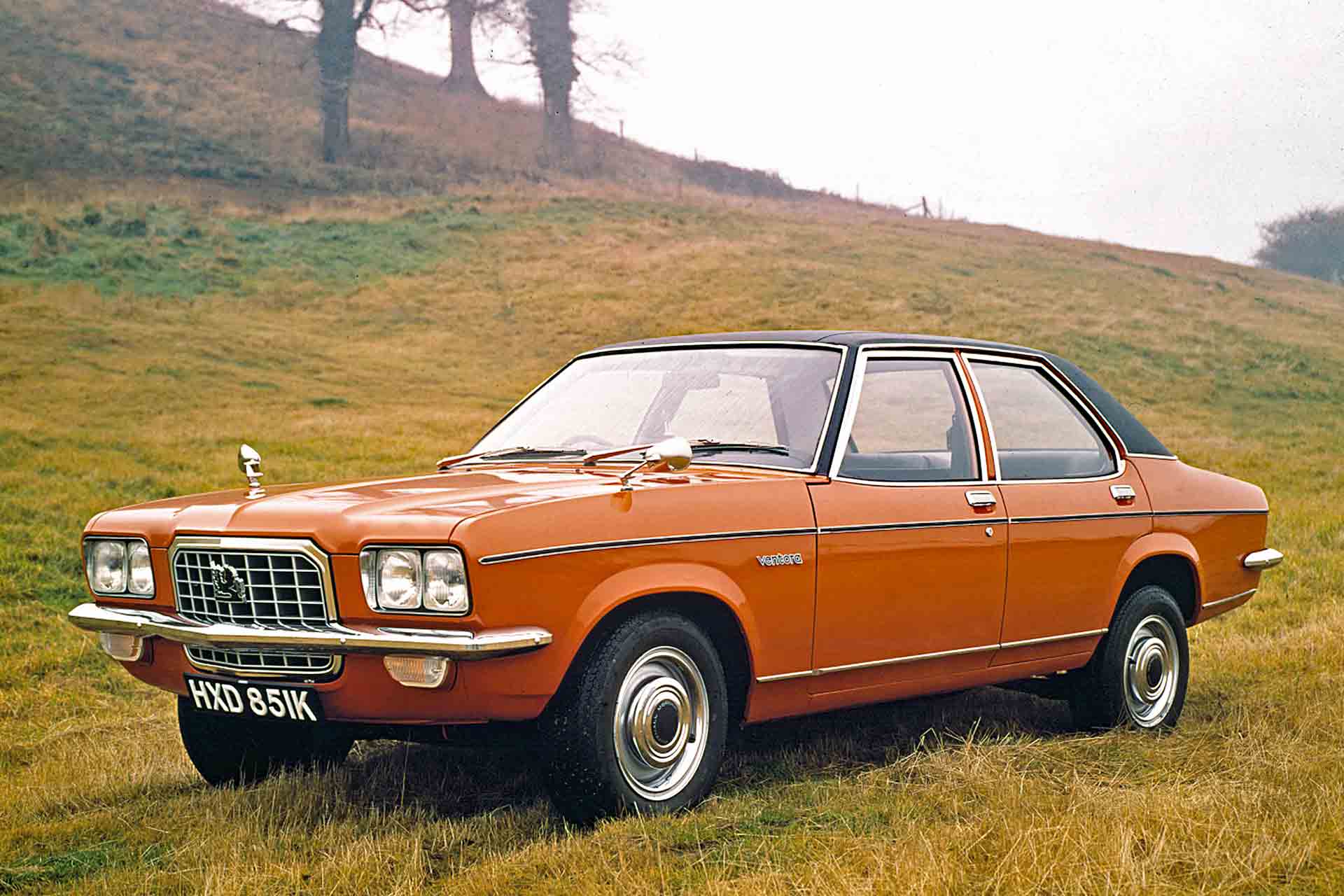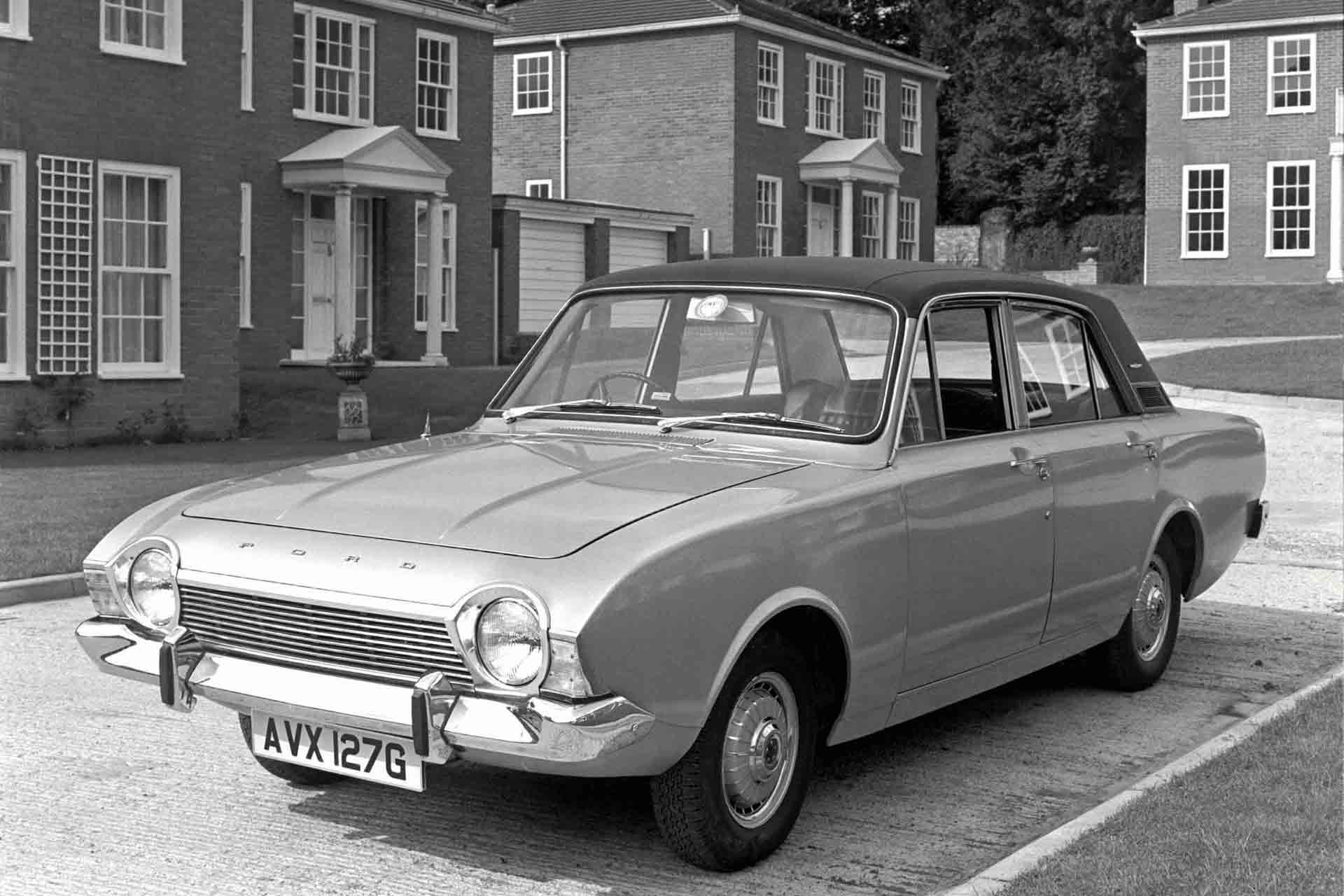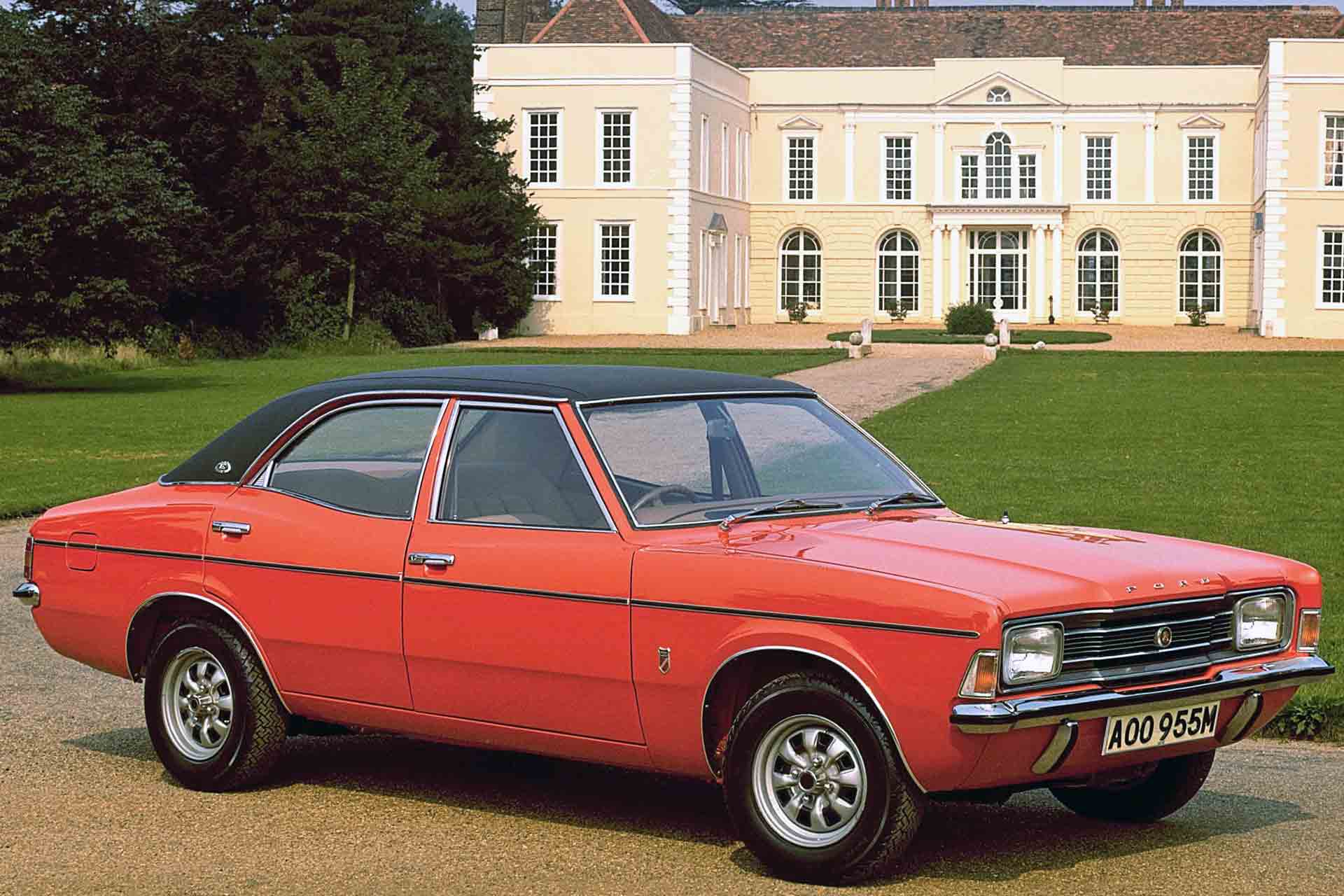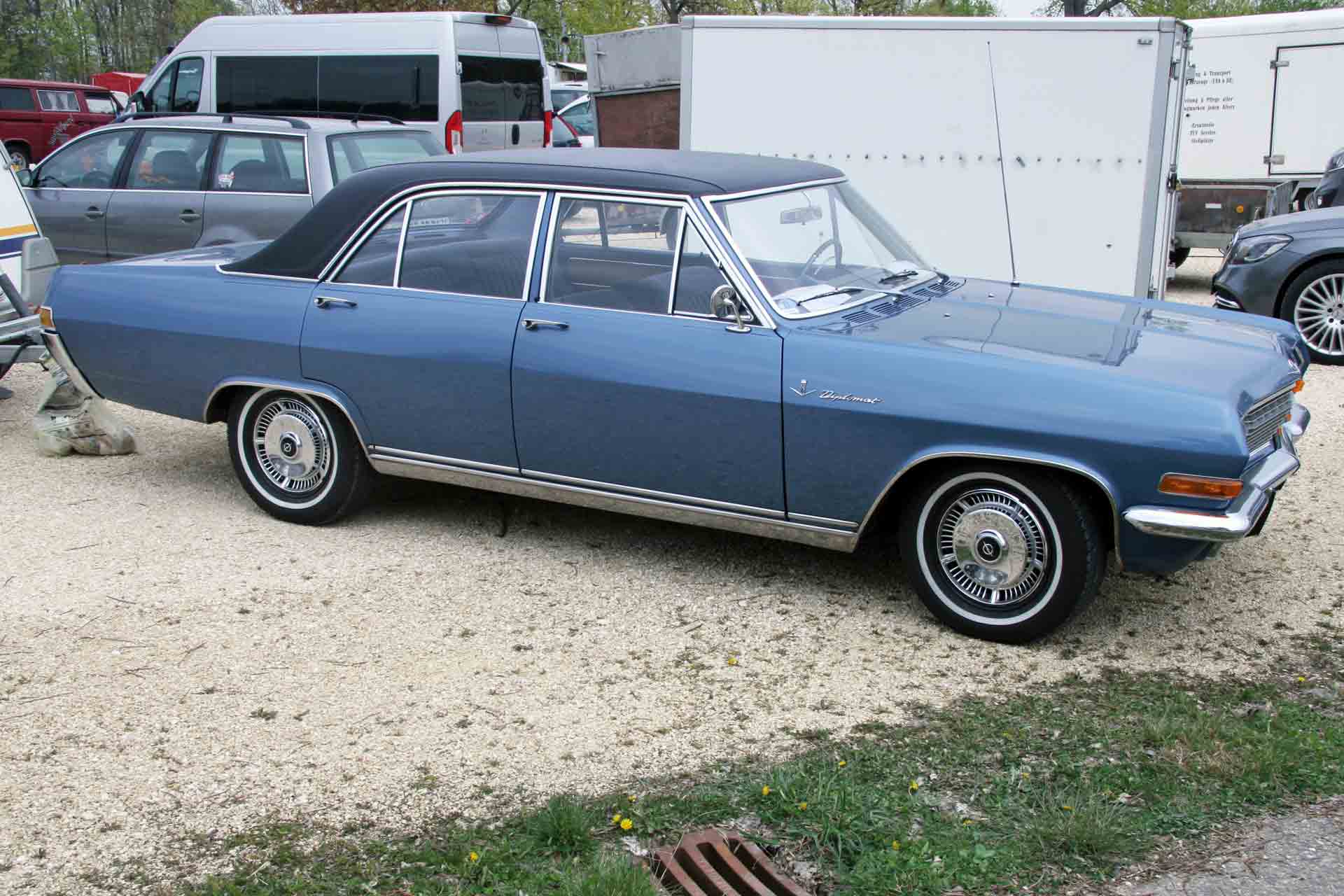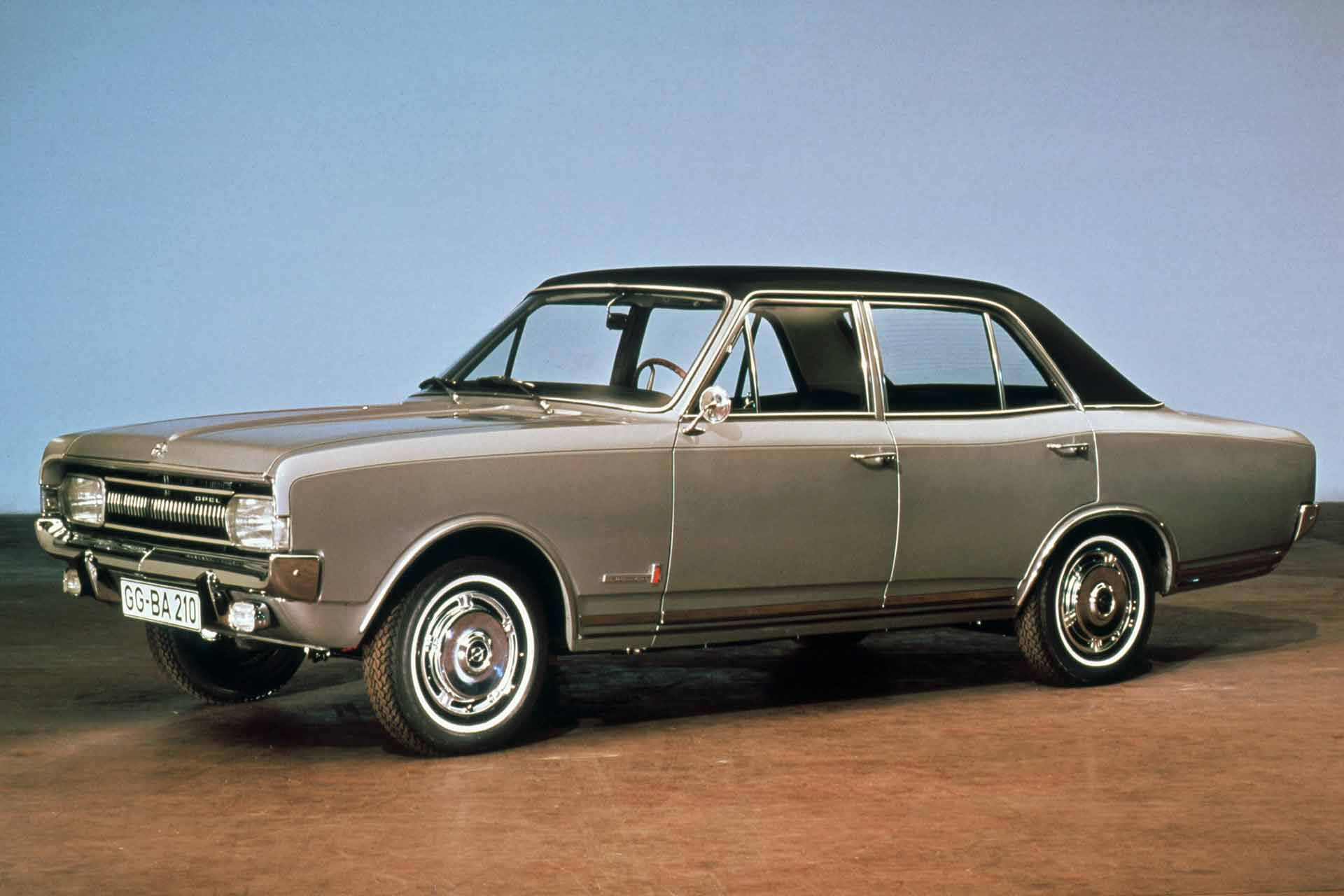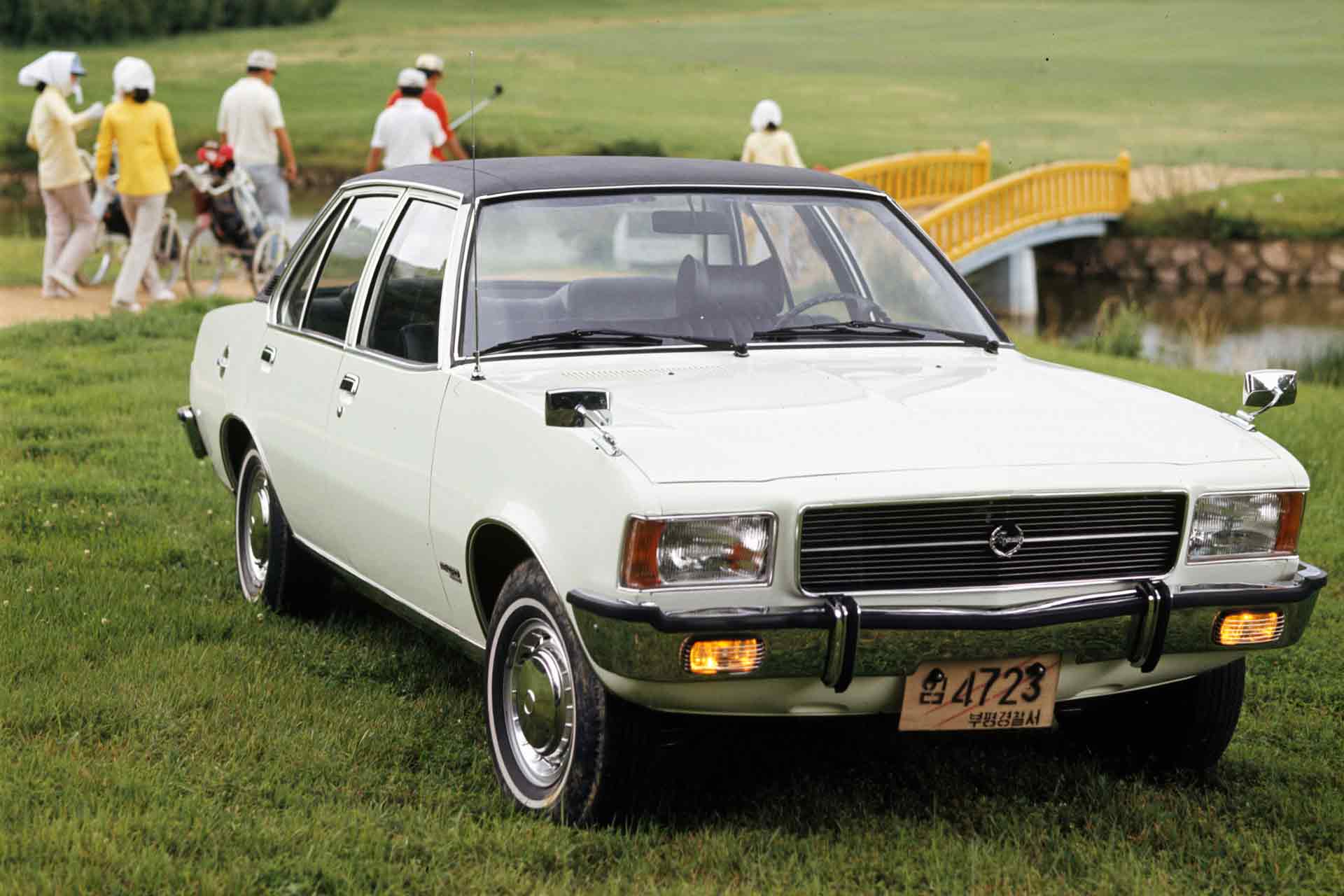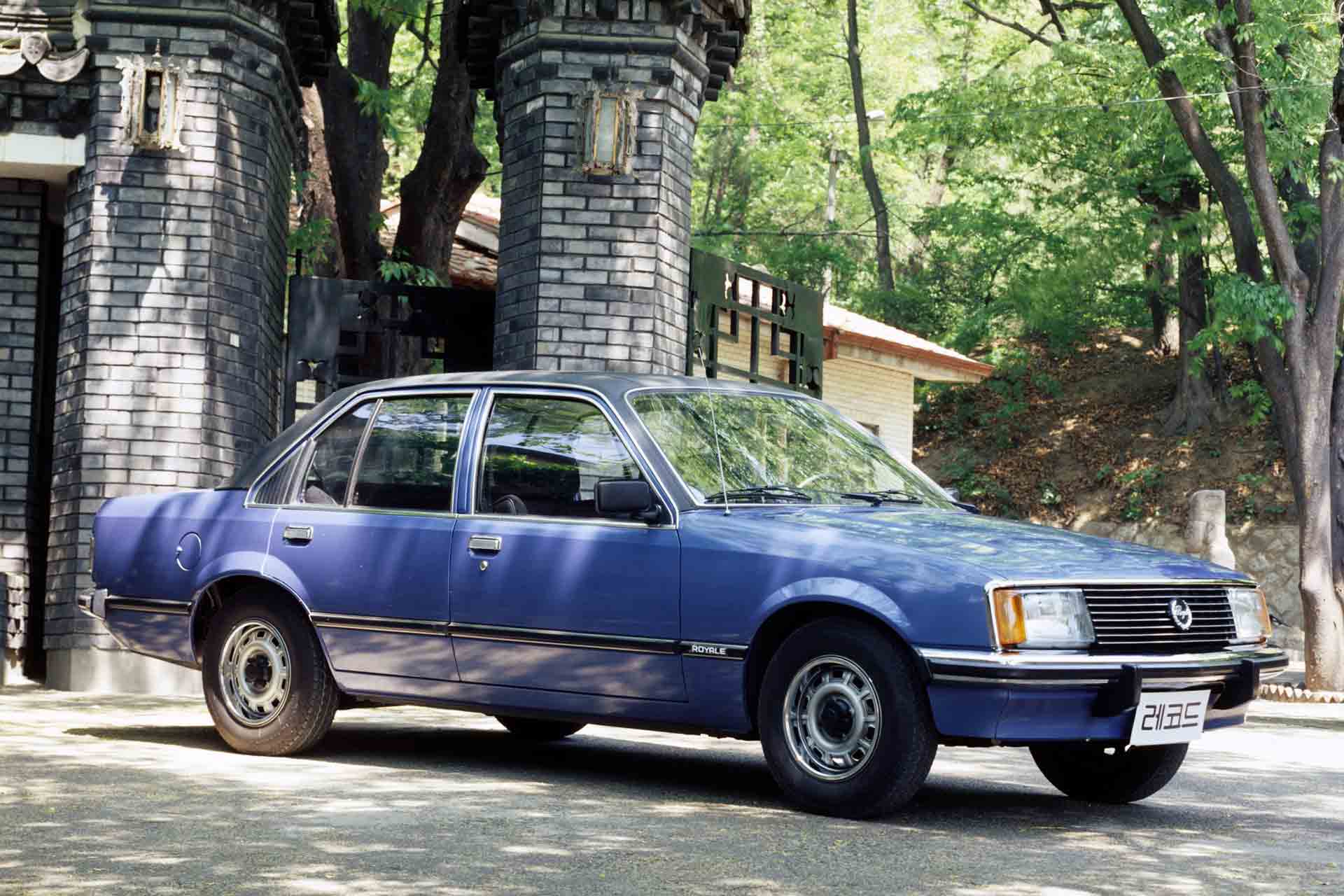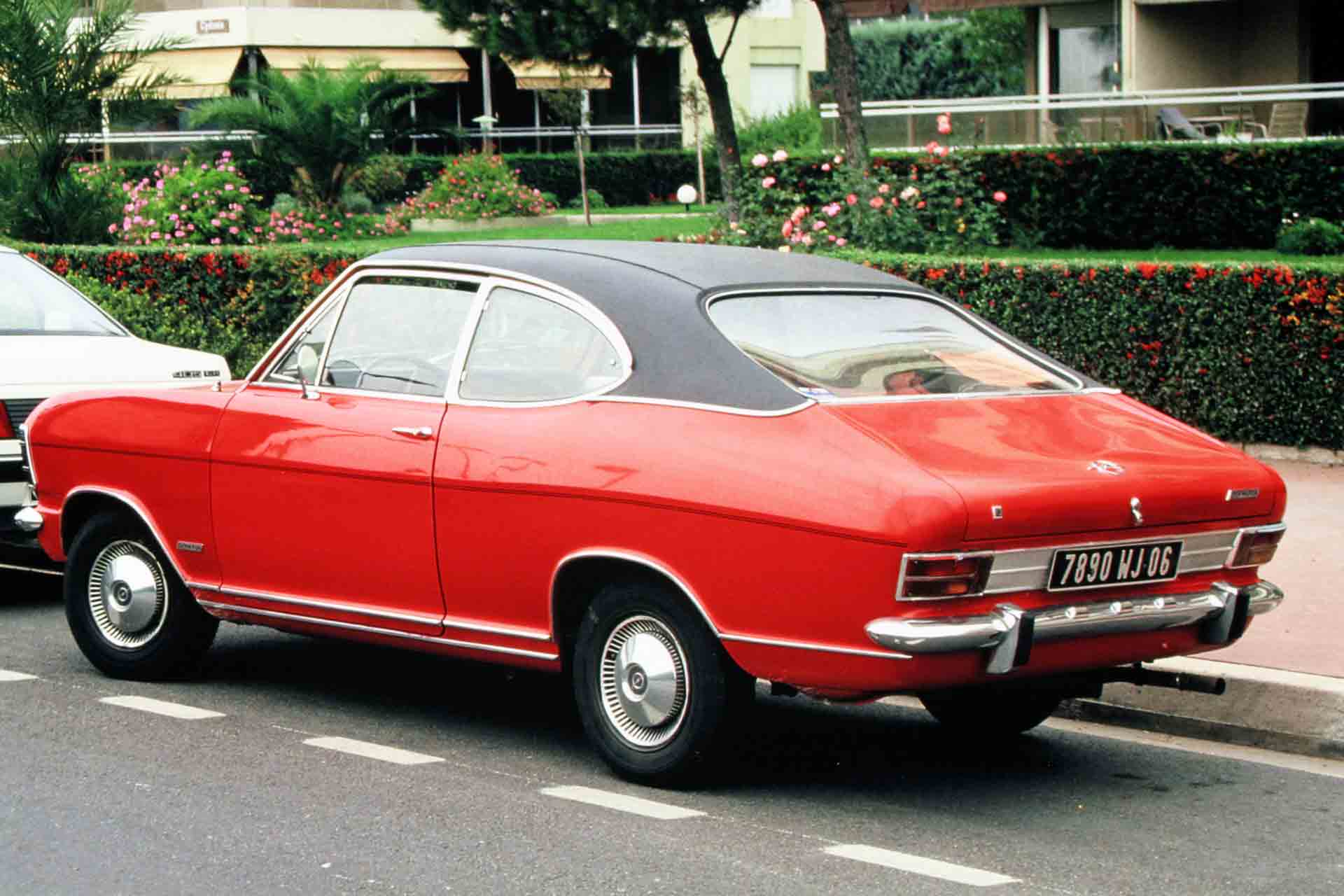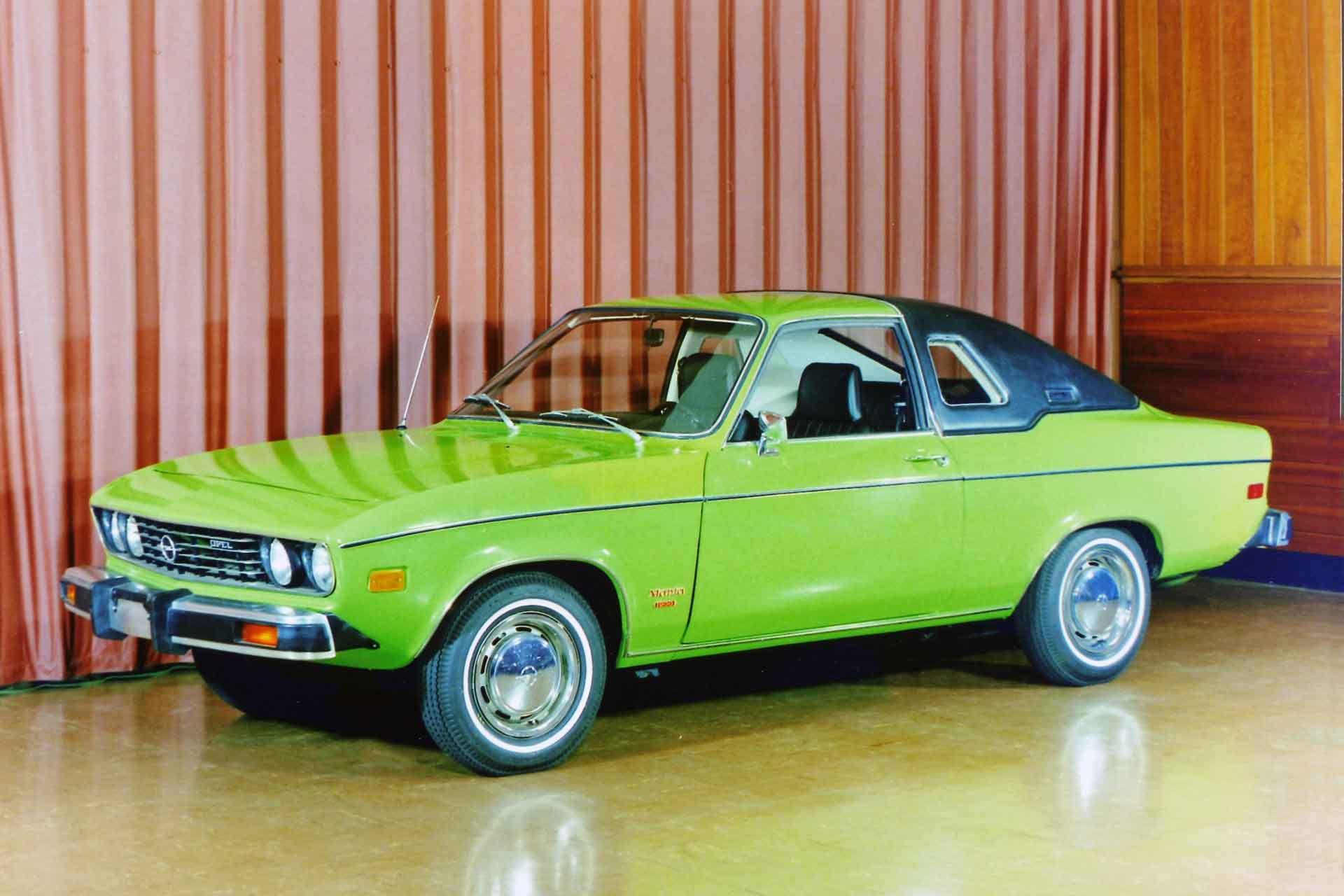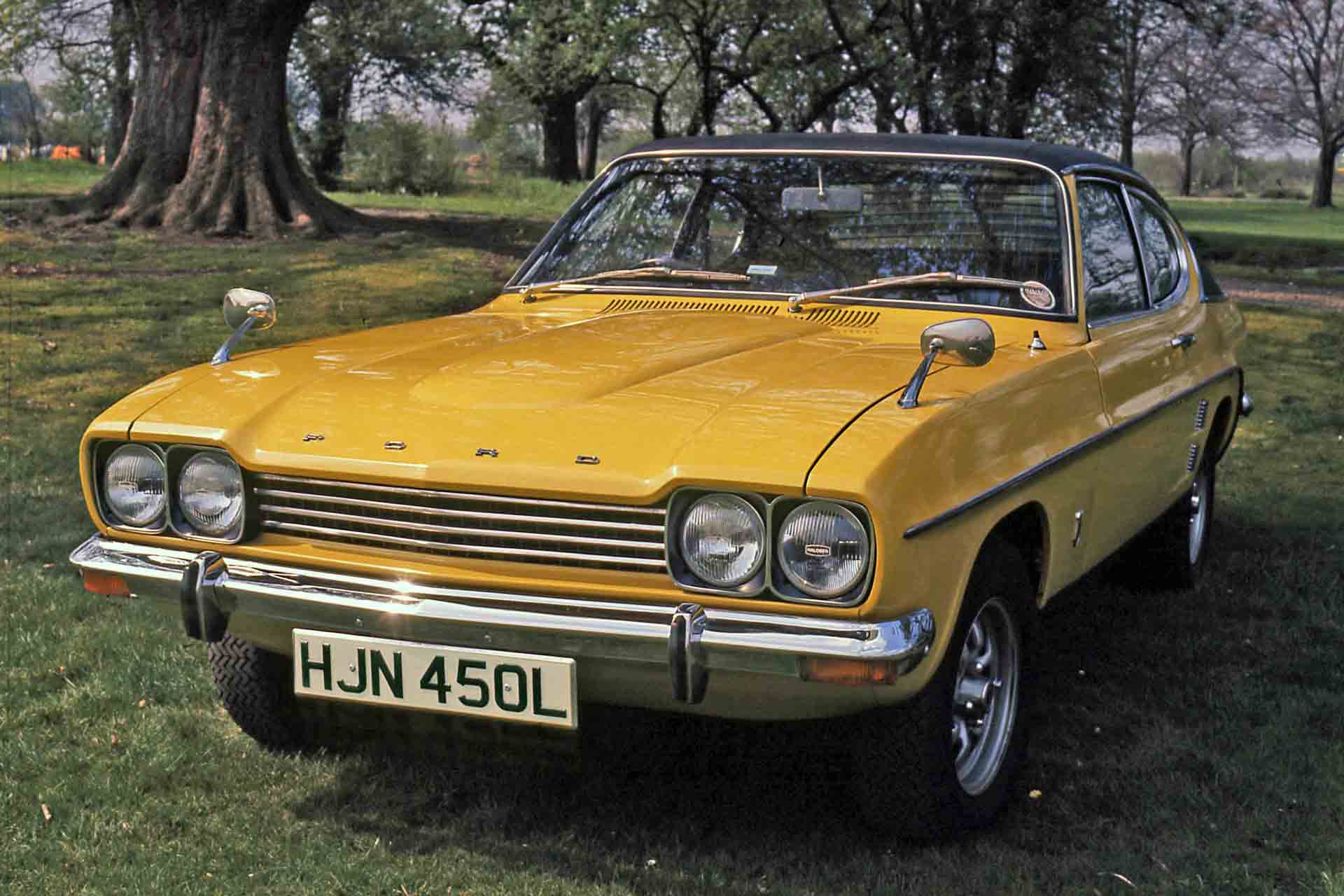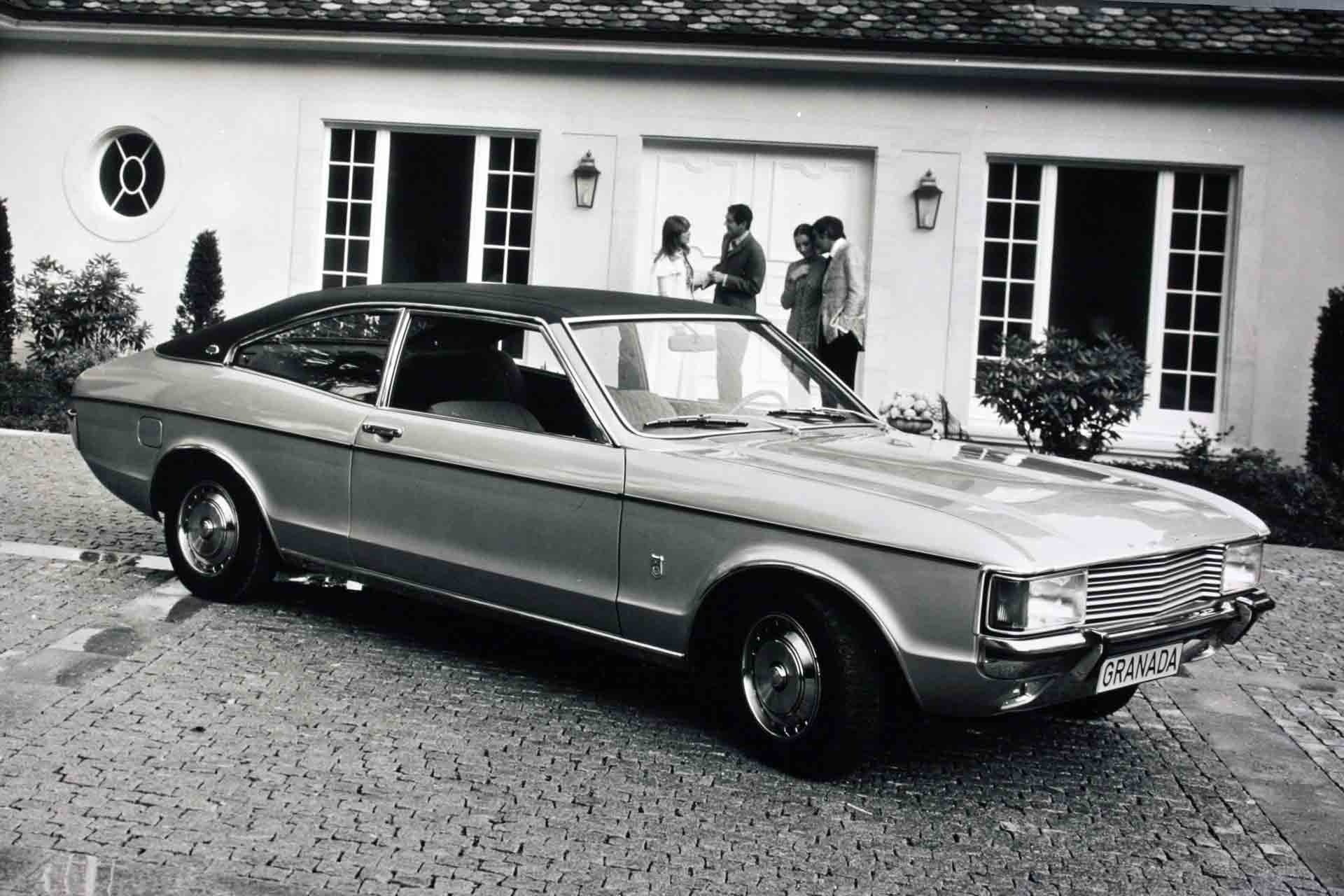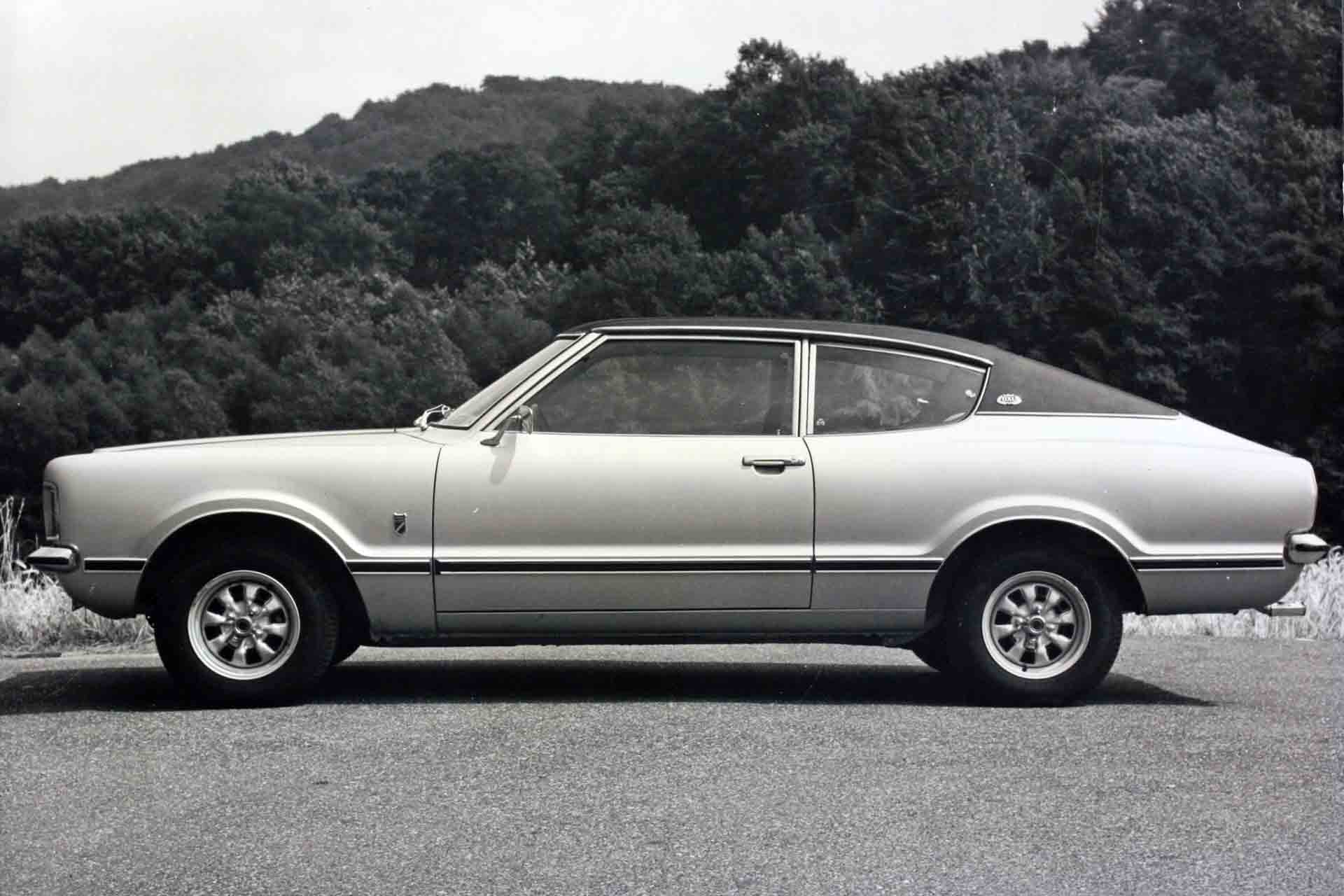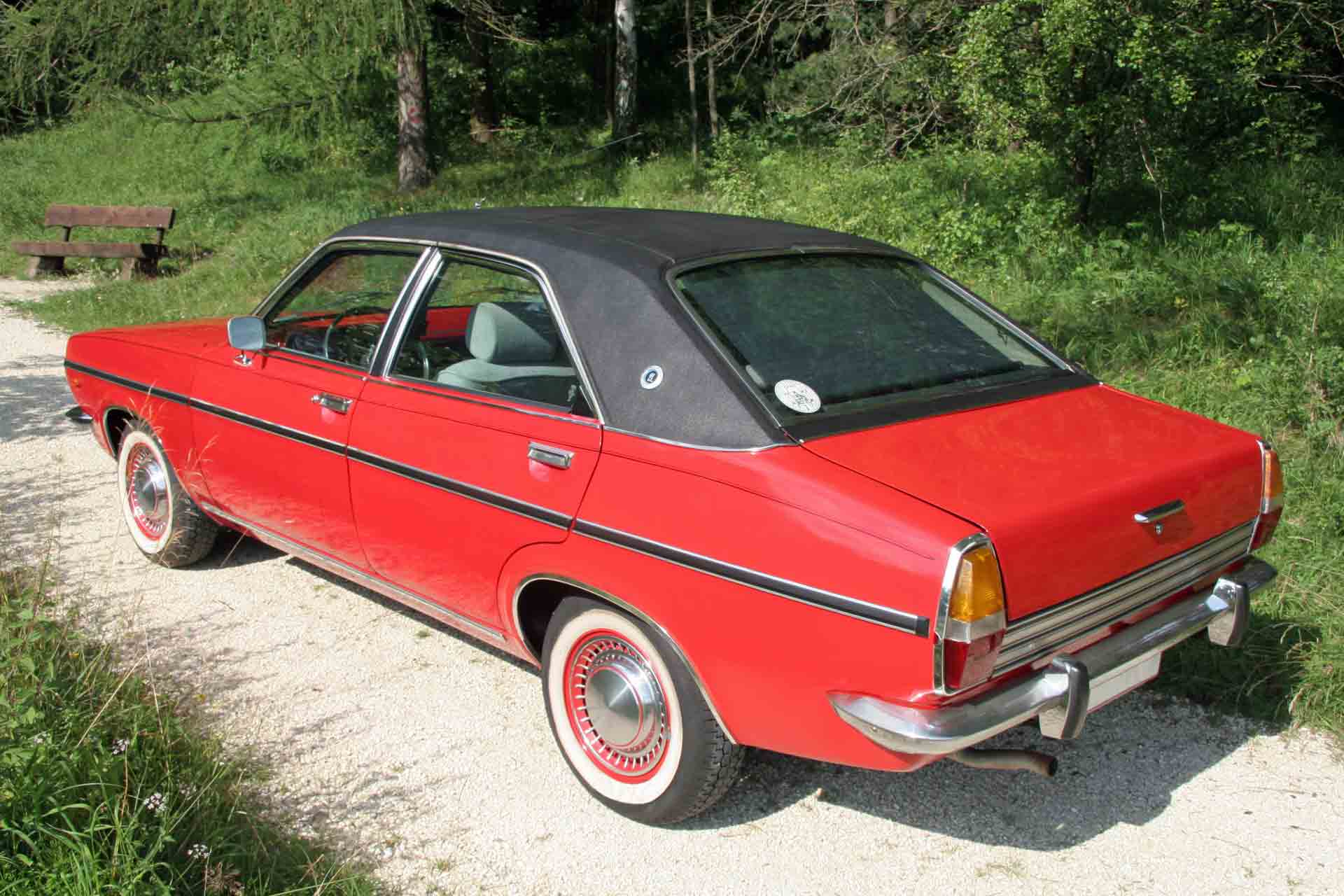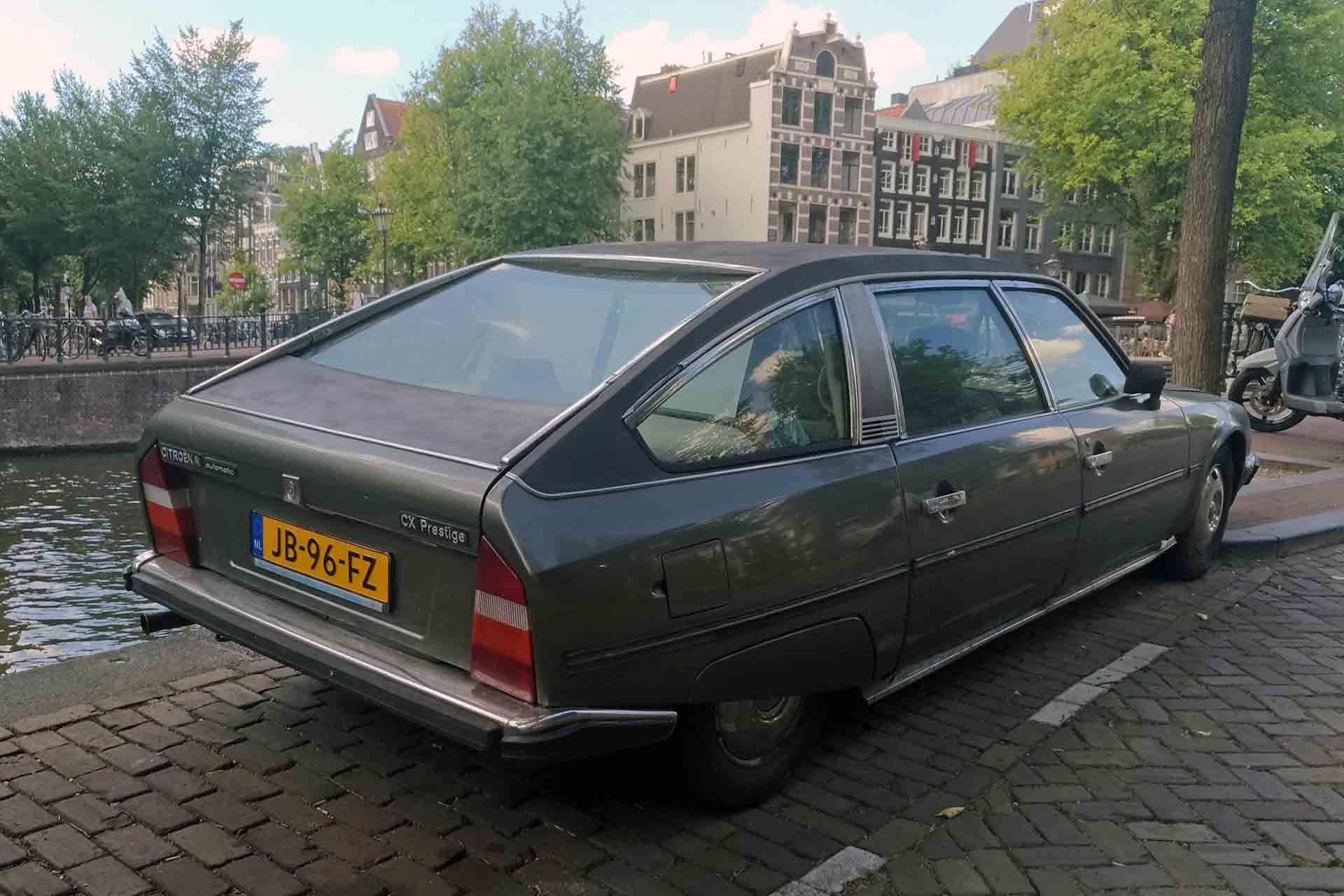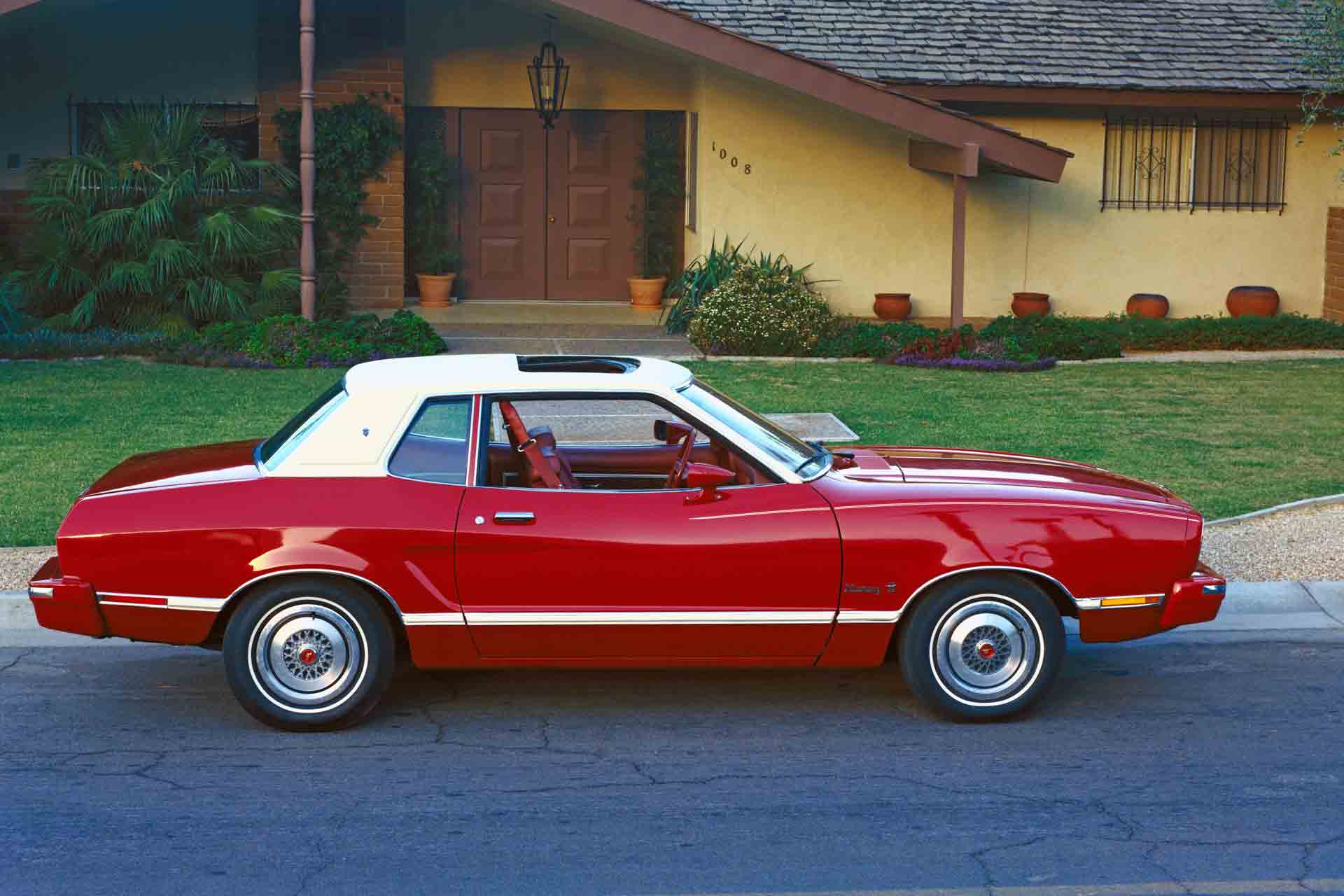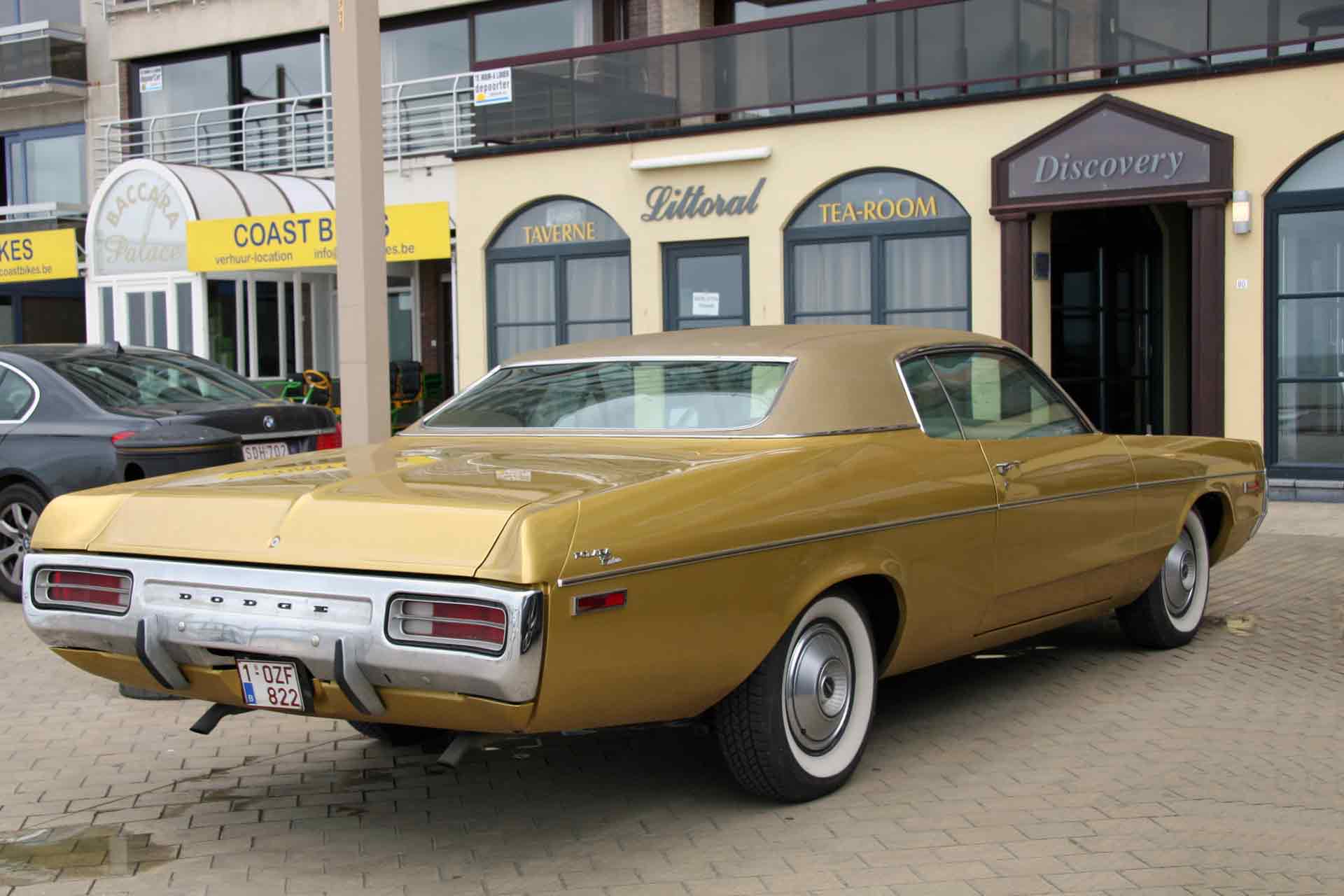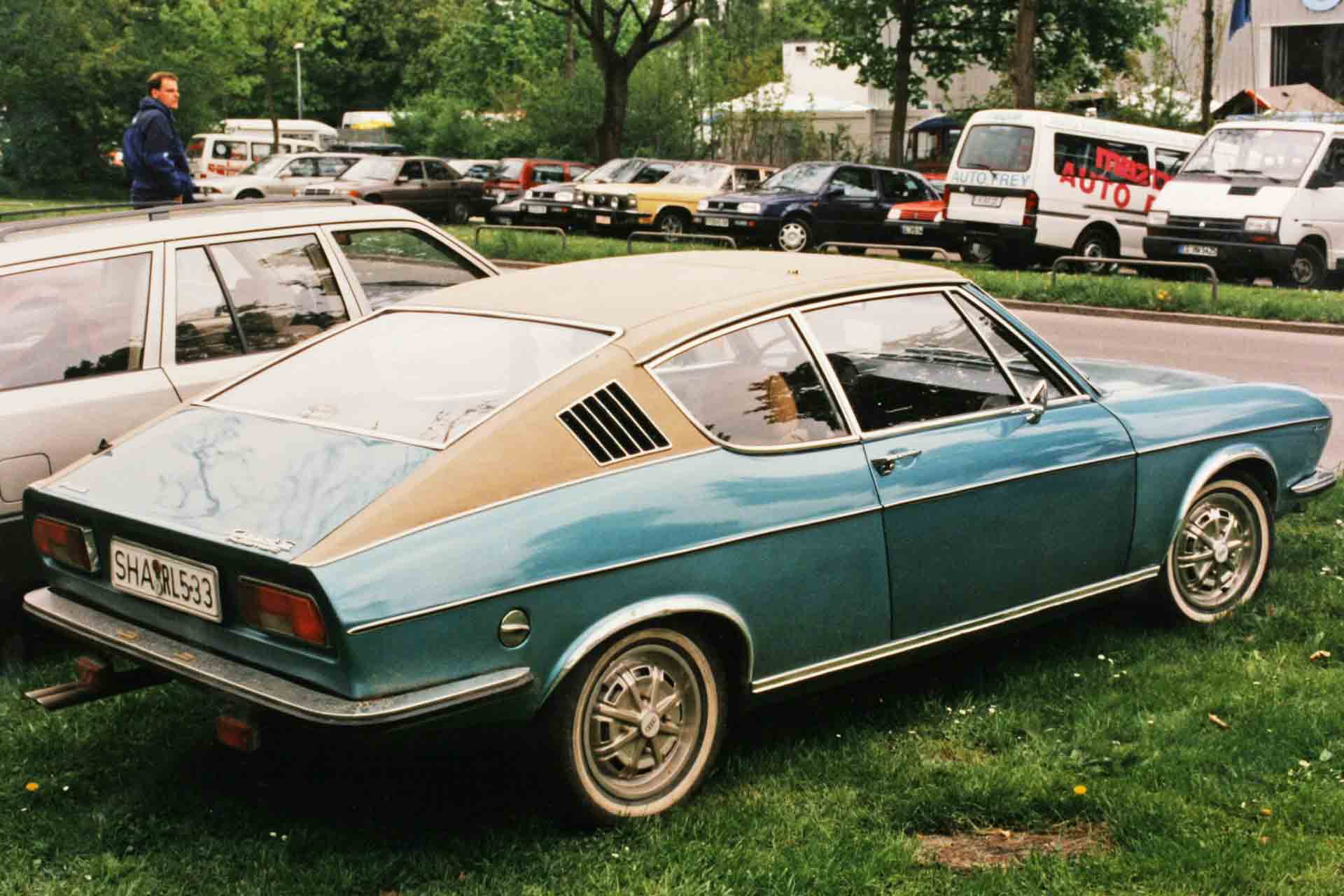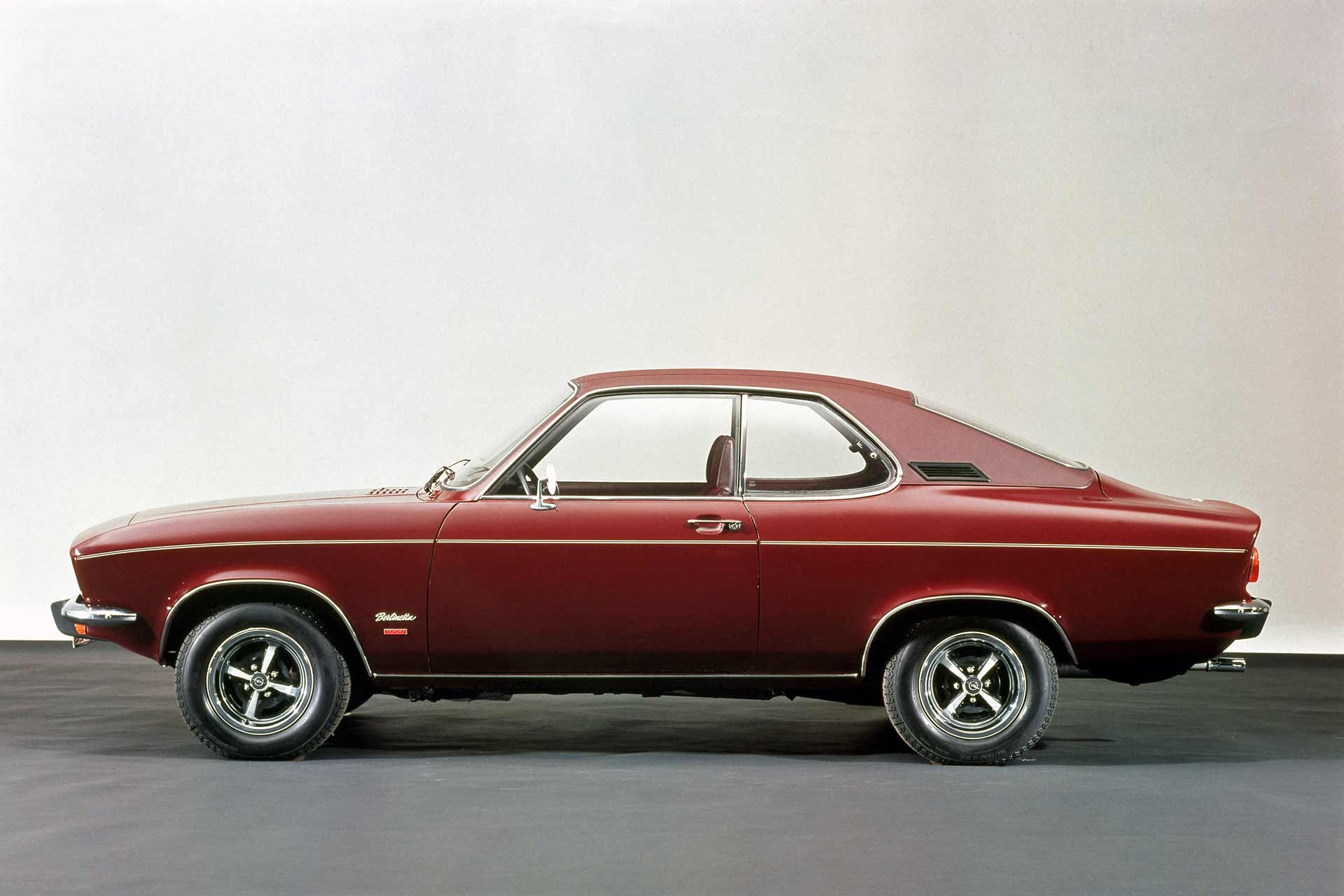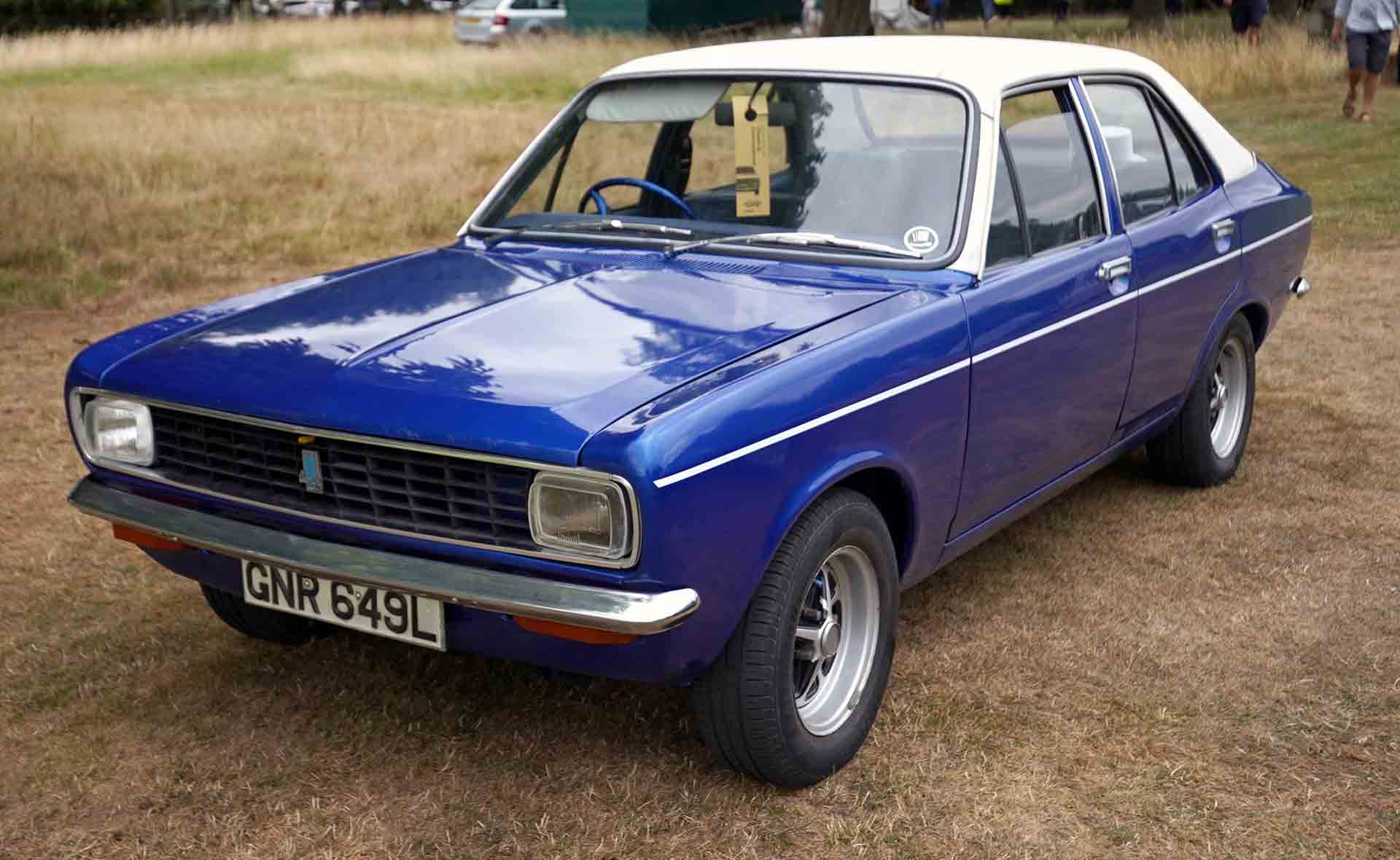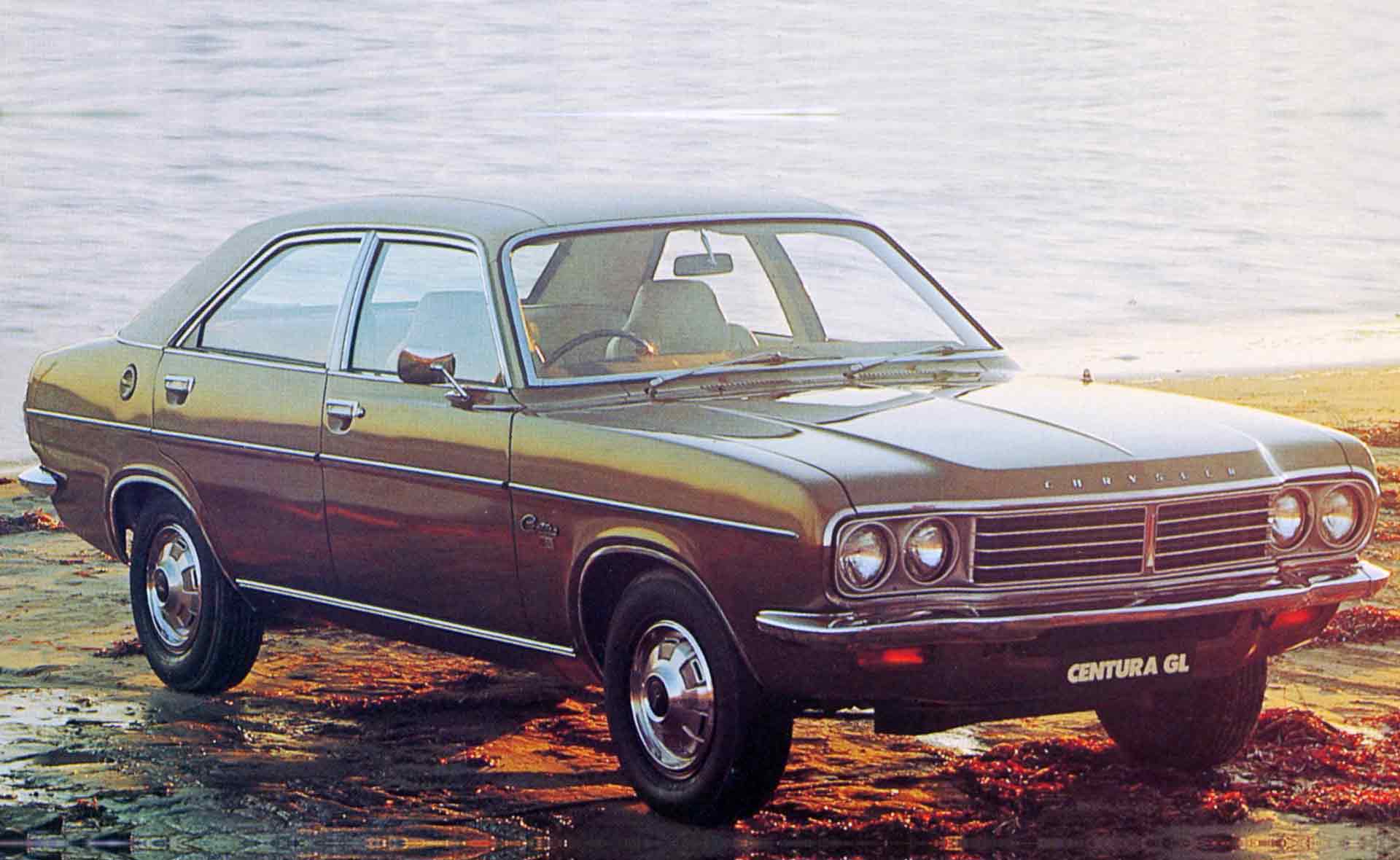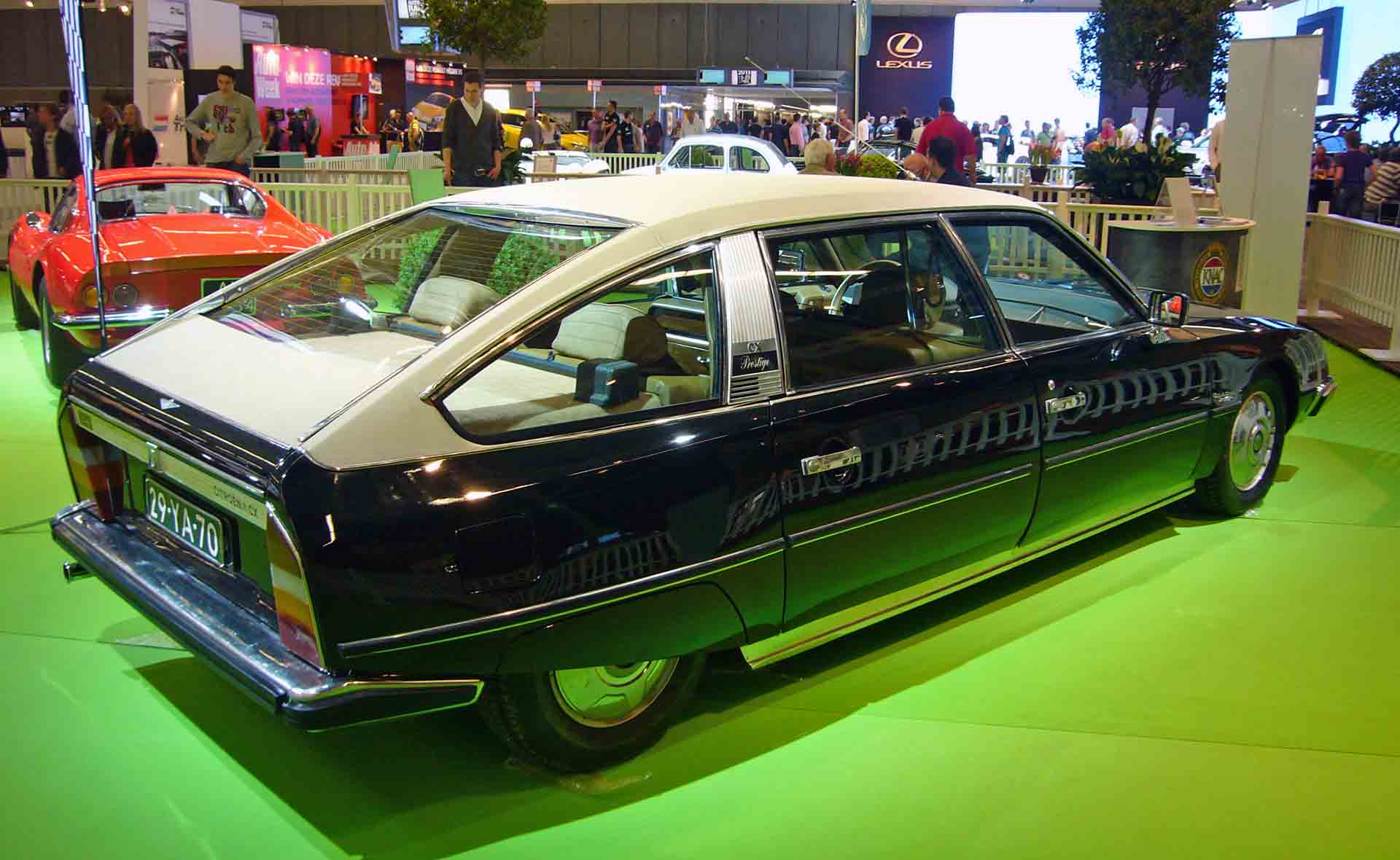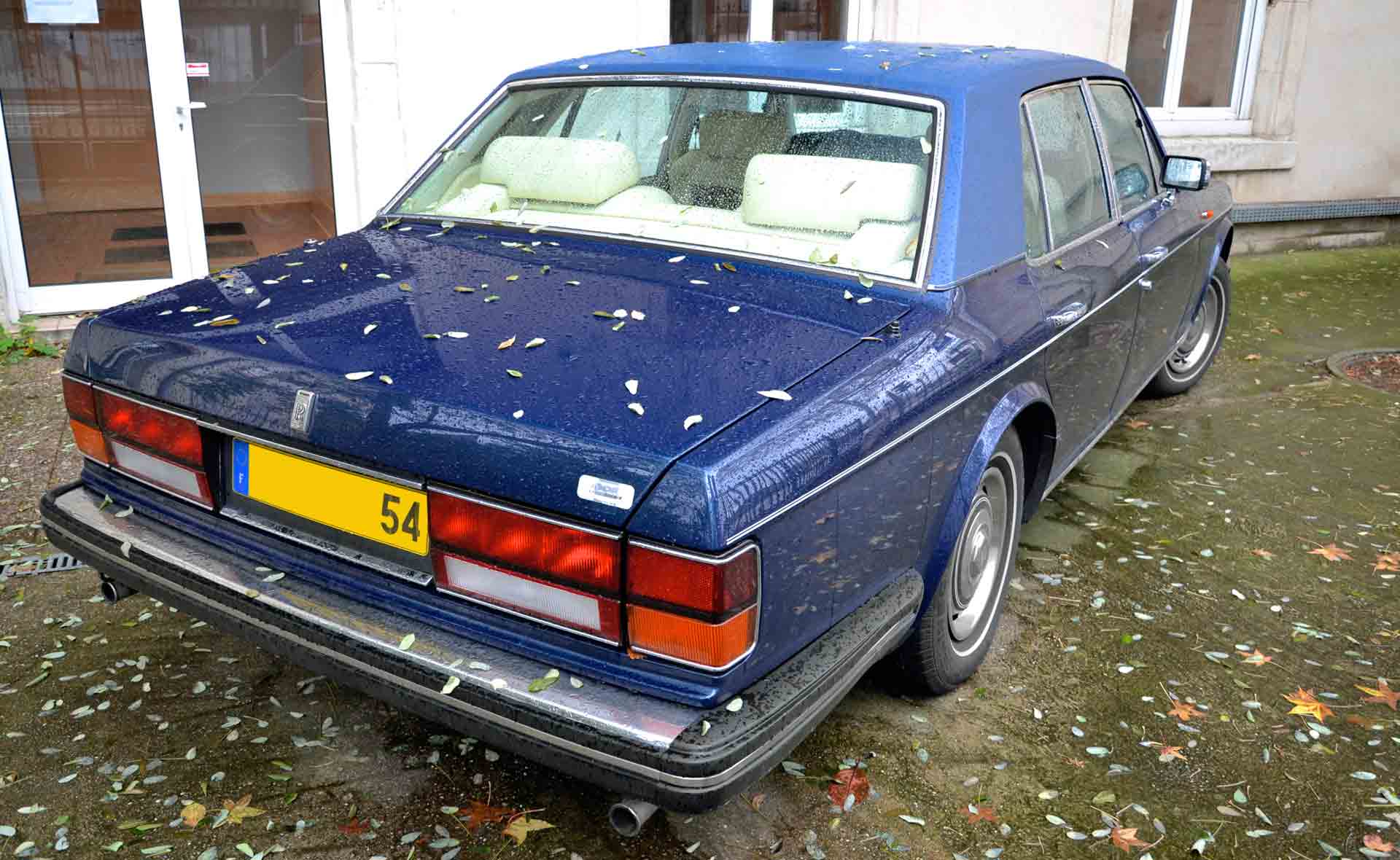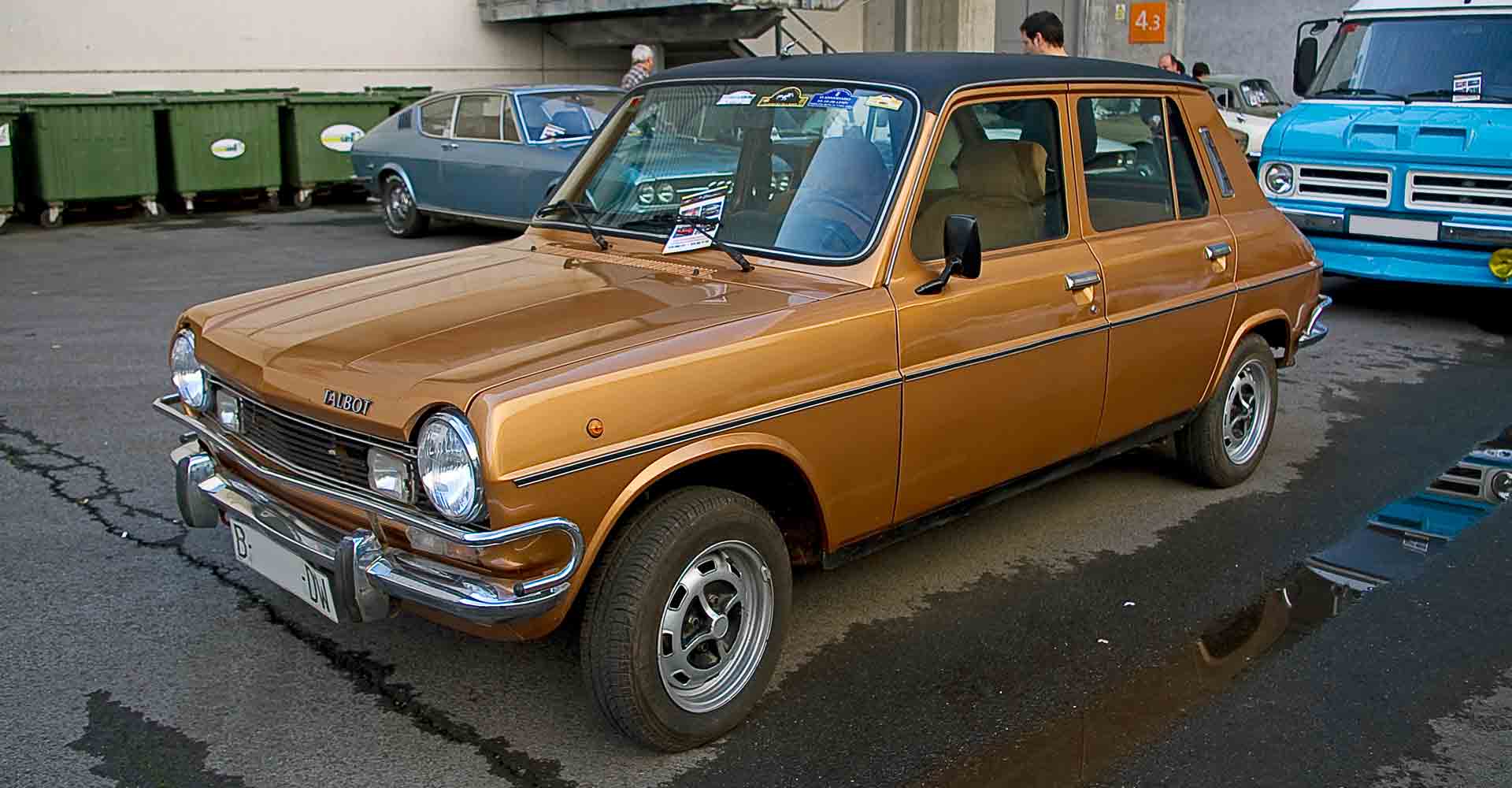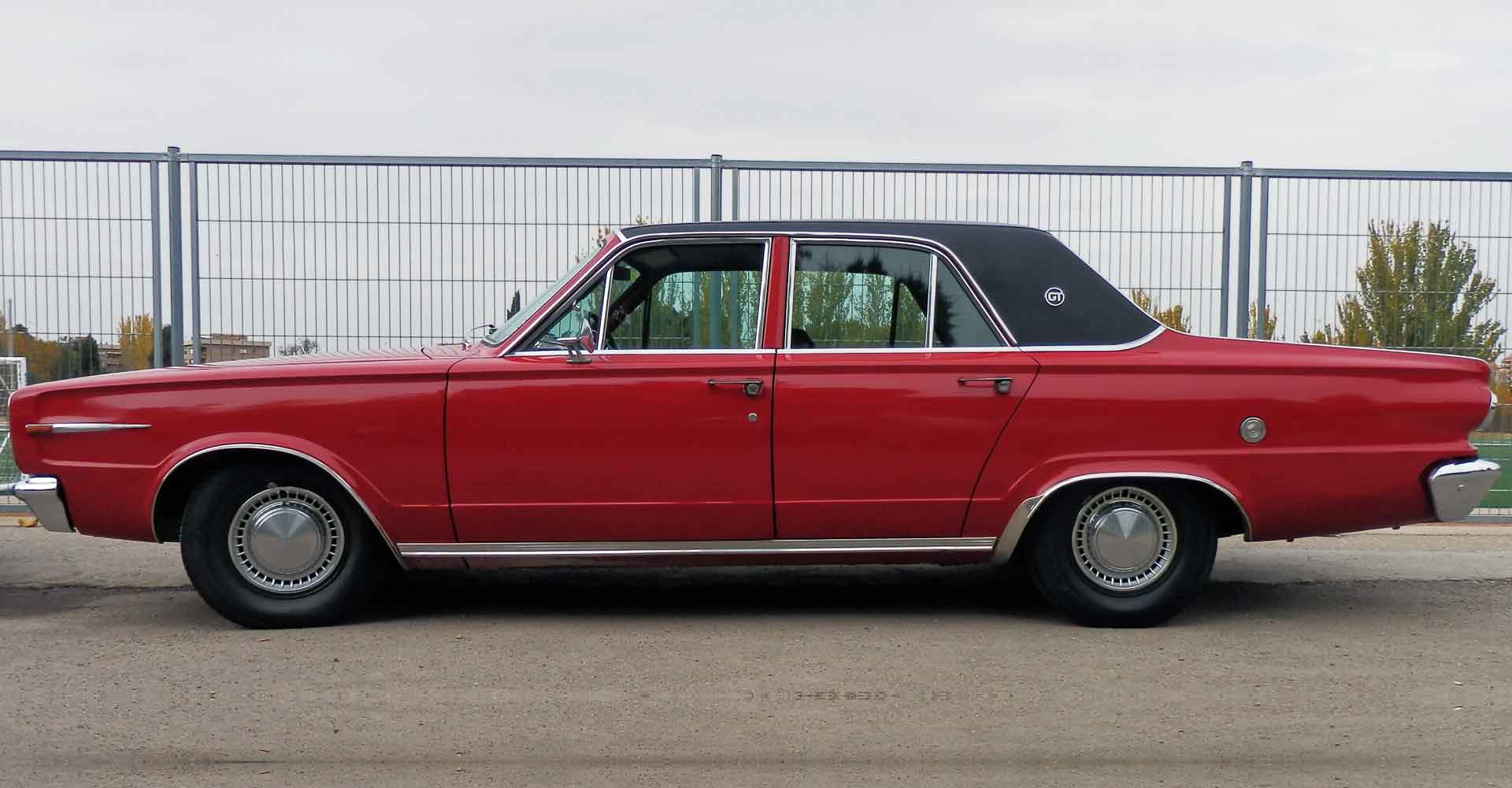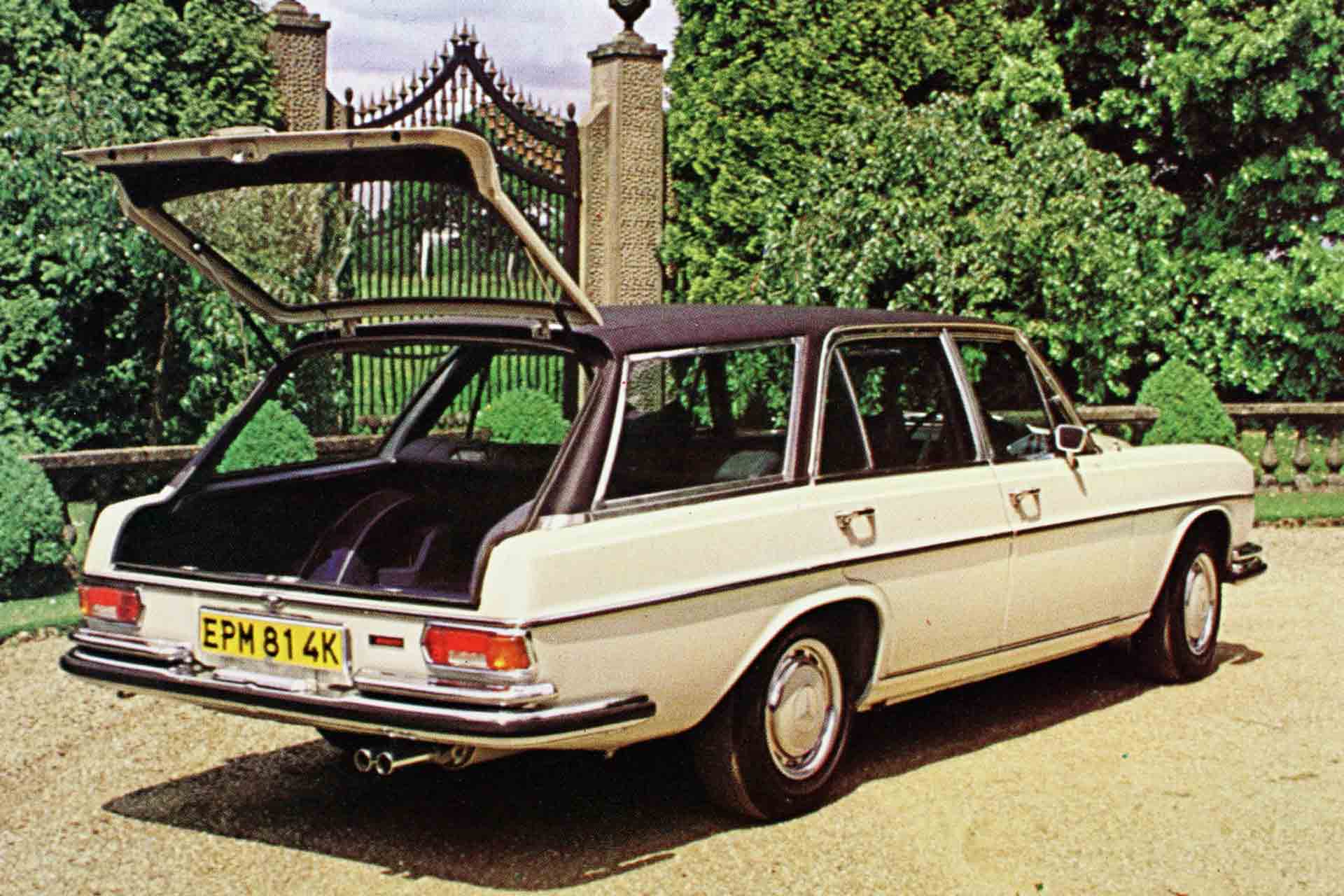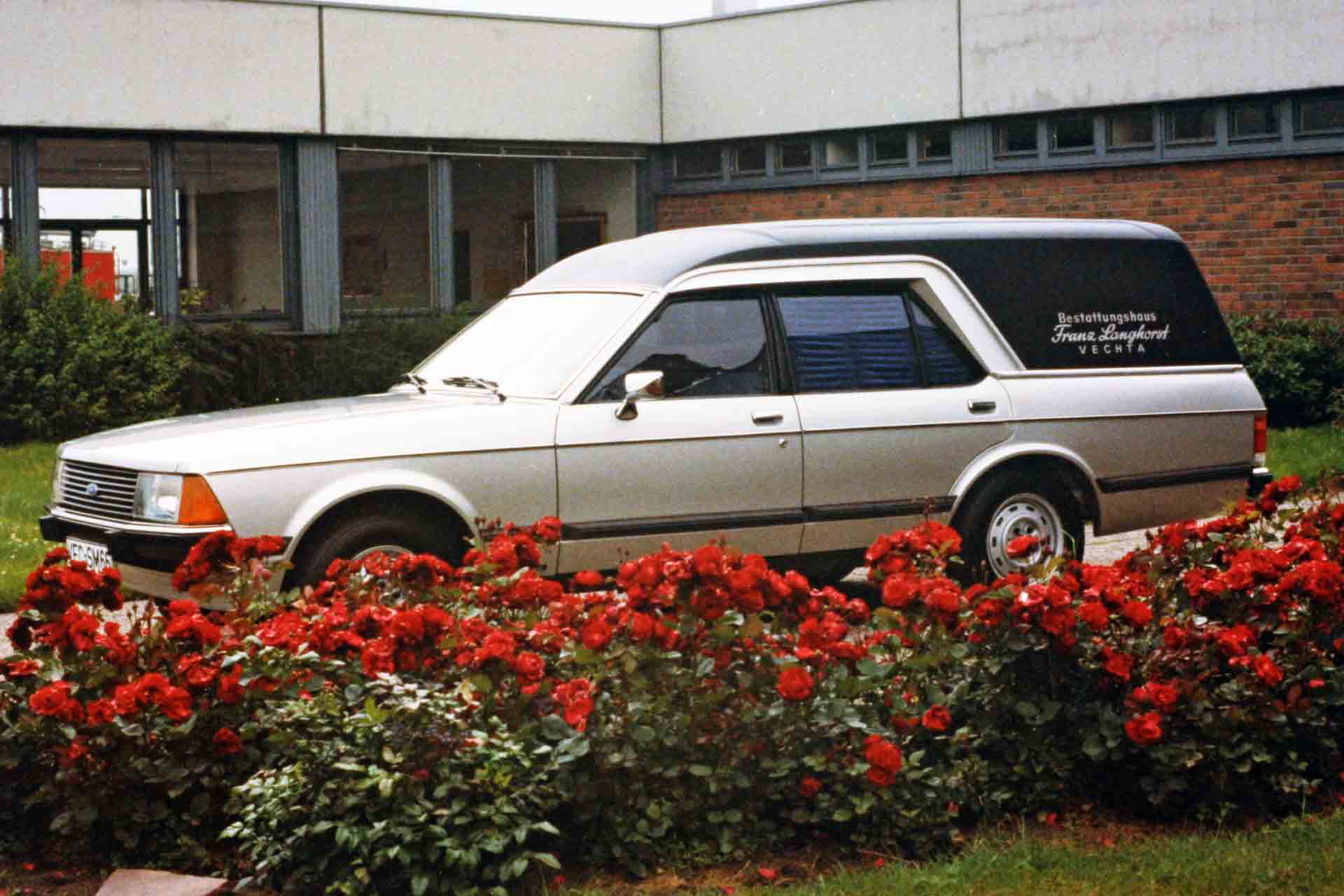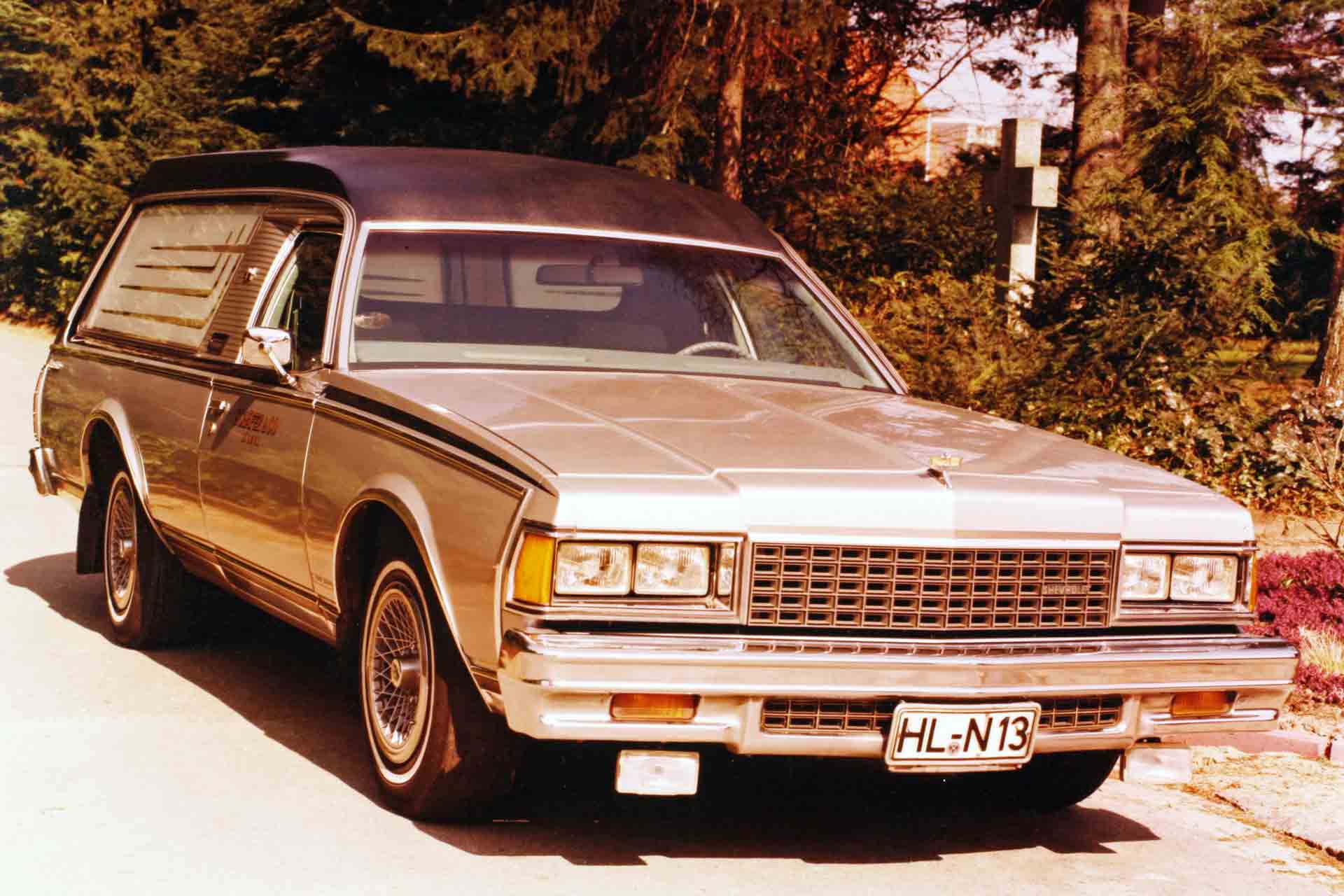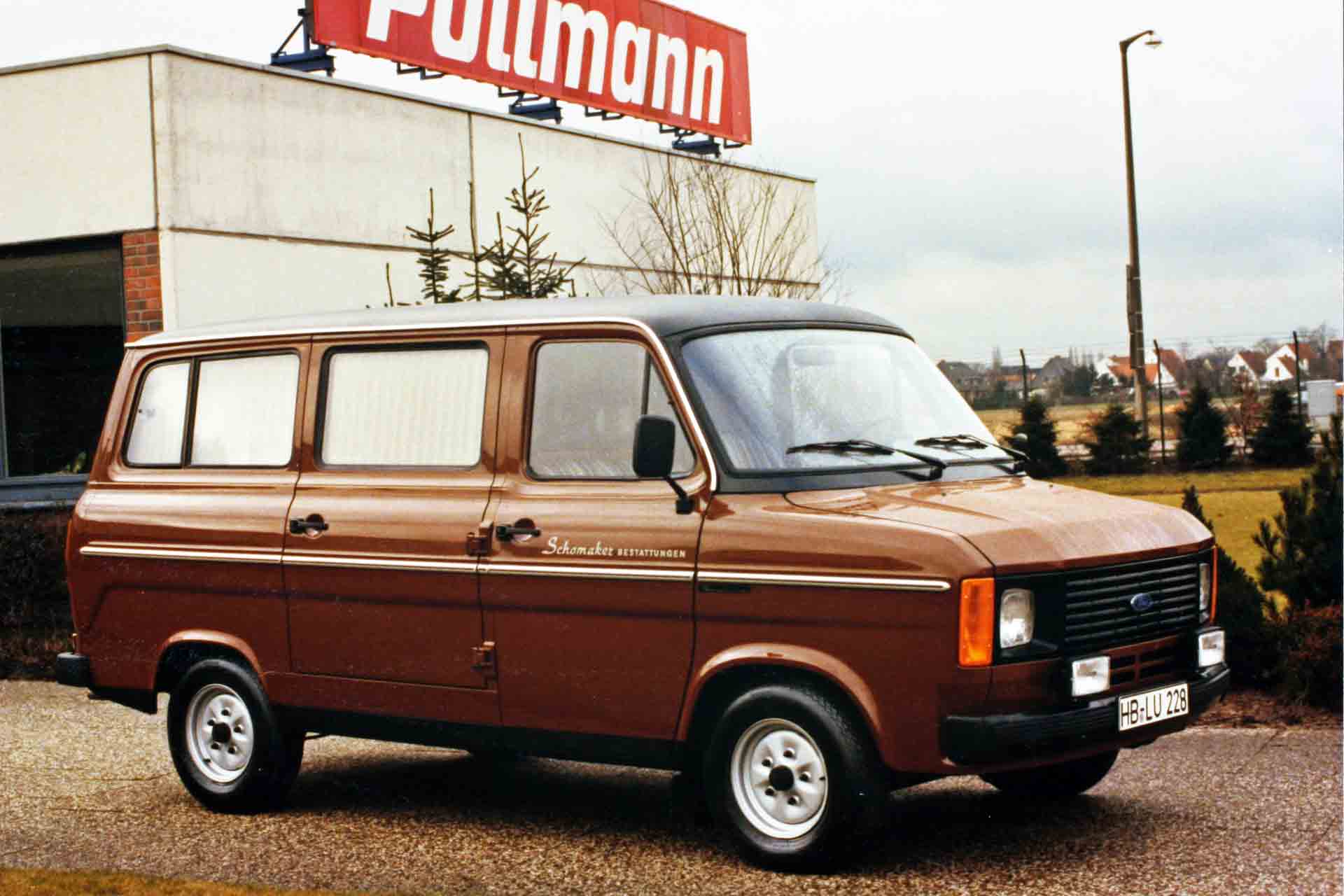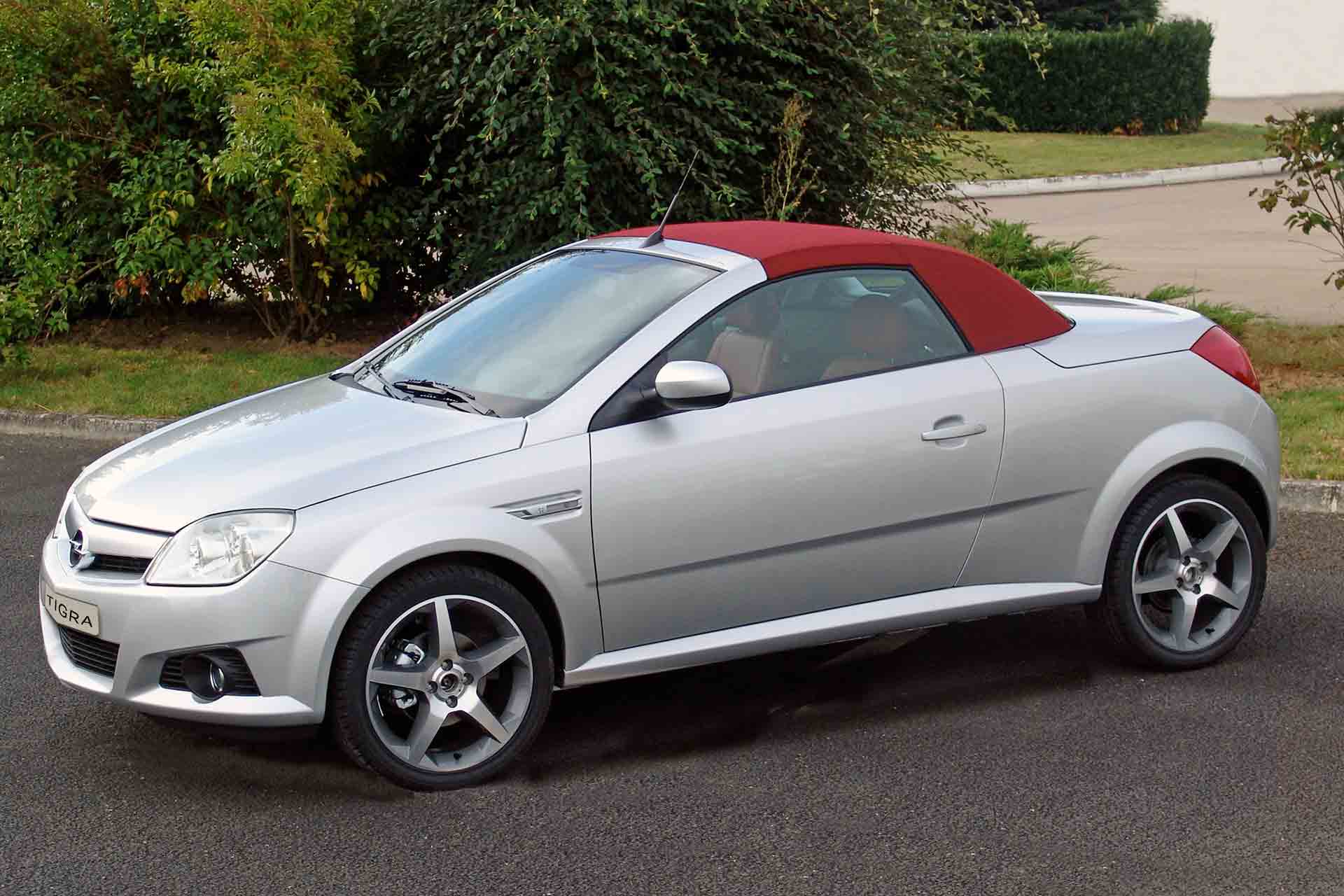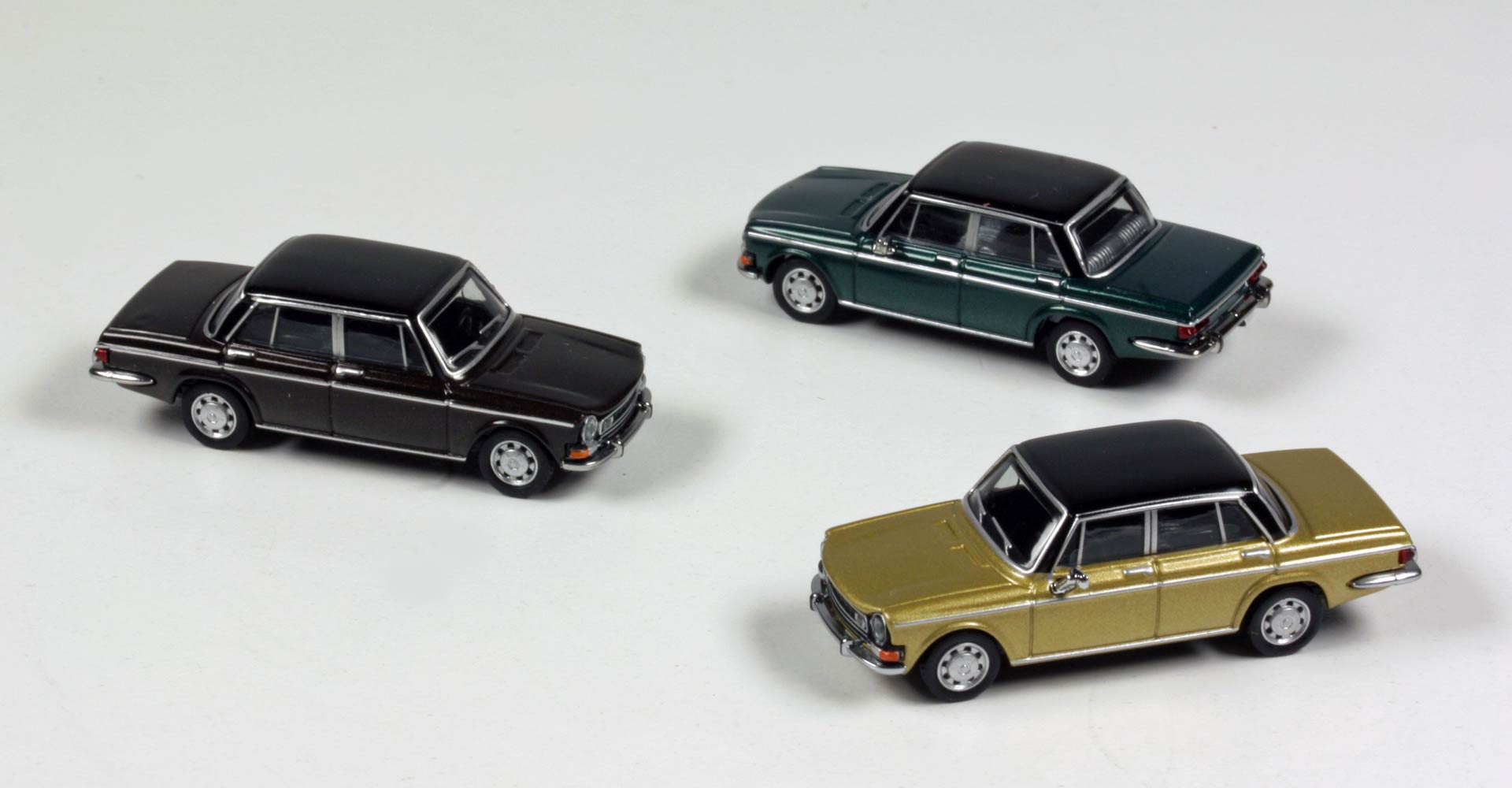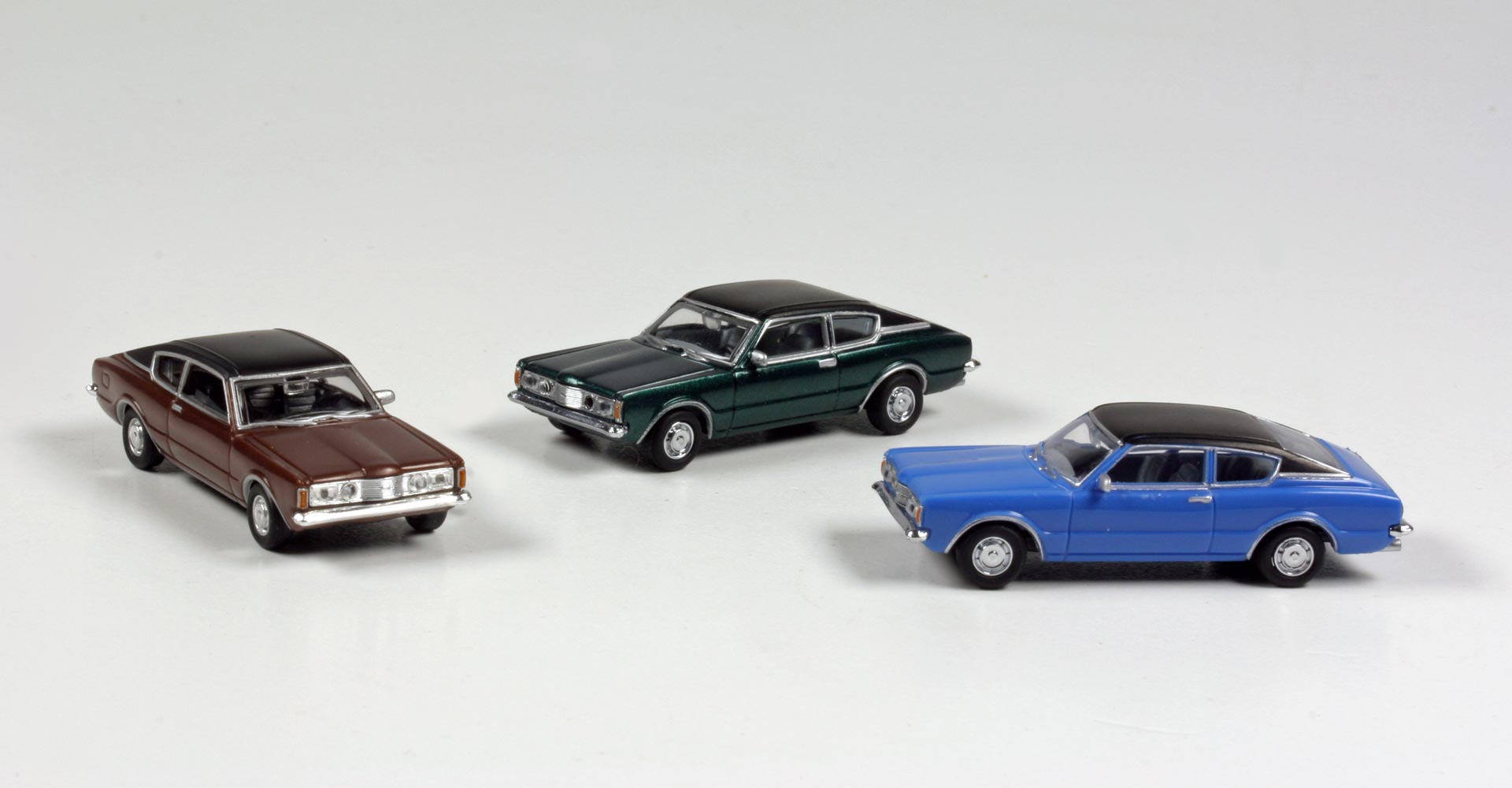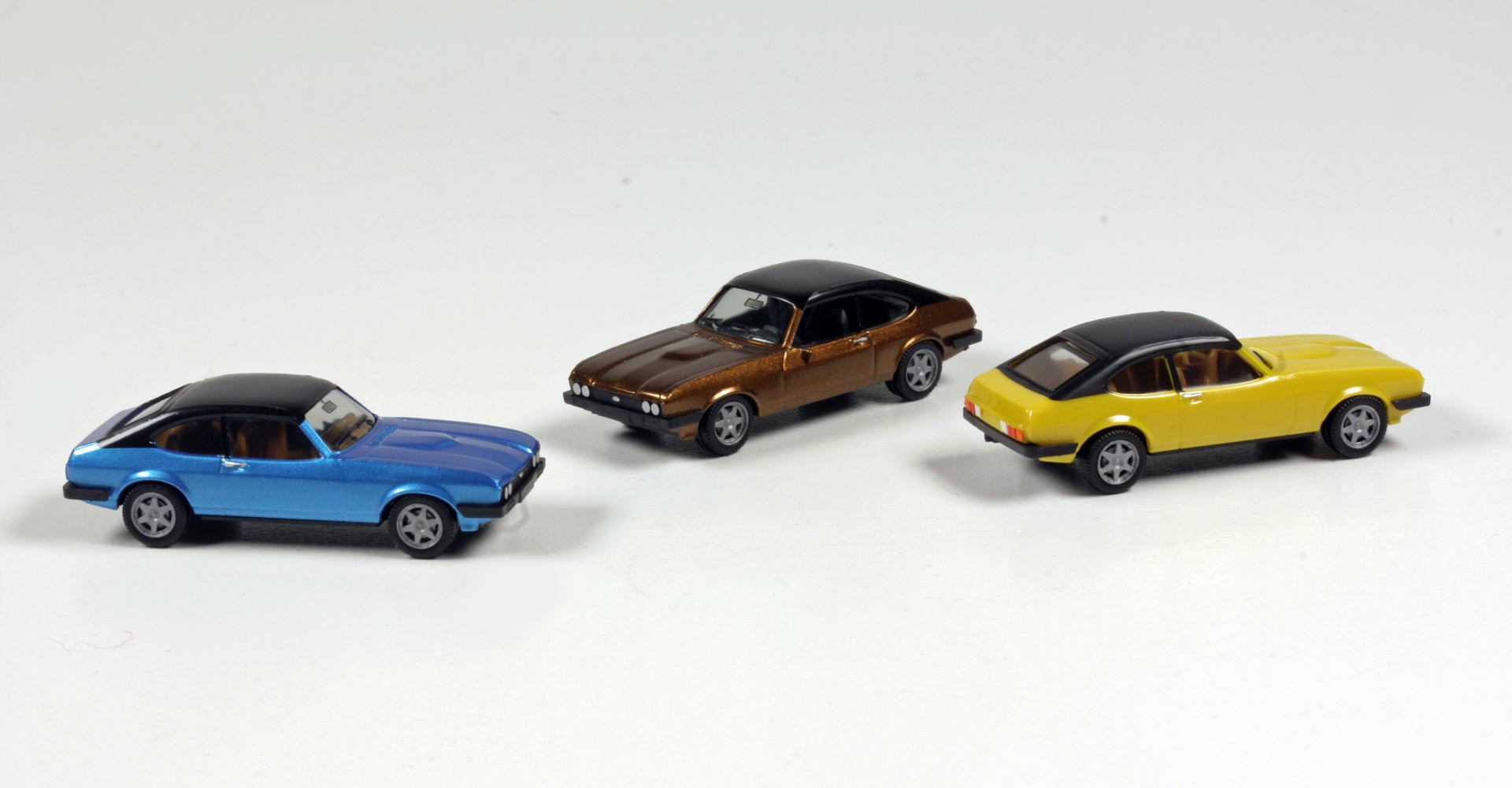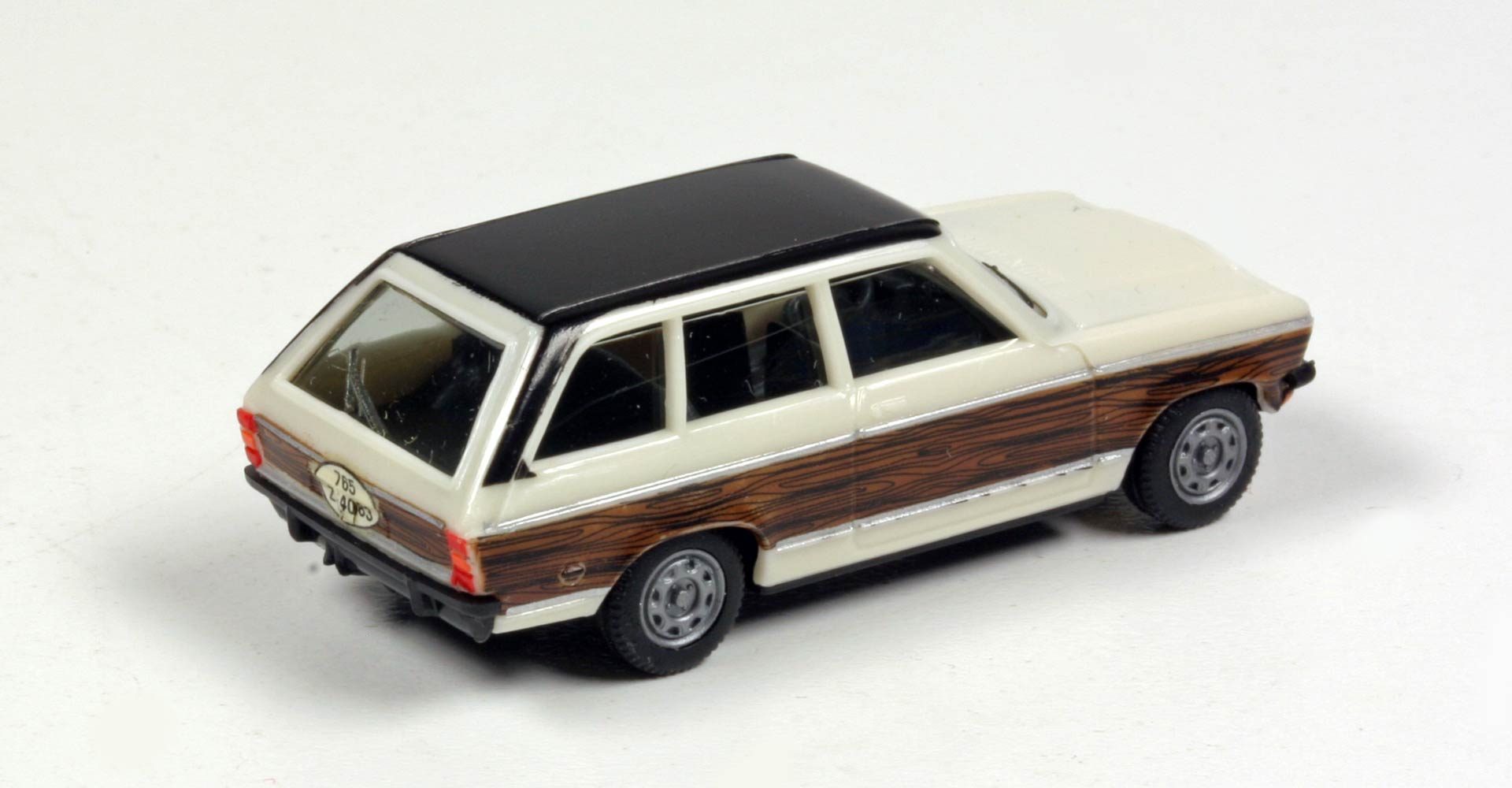Less Fashion Accessory, more a Statement
Not many accessories in the 1970s polarised popular opinion more than the vinyl roof. Technicians and engineers pointed out the practical disadvantages, car aesthetes raved about the look, existentialists considered the artificial leather upholstery to be nonsensical, while fans of the "American way of driving" adored this pure Americanism, and manufacturers embraced an accessory that - at least for some manufacturers – guaranteed good sales.
A few square metres of artificial leather
A few square metres of artificial leather with a textured surface, cut in three parts to fit perfectly, glued to the roof of the car. This is the "vinyl roof", or to be more precise, the vinyl roof cover. Instead of "vinyl", you could also say "artificial leather"; it is in fact PVC plastic, i.e. polyvinyl chloride. Usually black, sometimes coloured, depending on the automotive culture. The ensemble consists of three parts, on the right and left a moulded part that covers the edge of the roof and the C-pillar (sometimes also the A-pillar), in the middle a wide strip that covers the actual roof. The three parts are joined together by a kind of overlapping seam. The whole thing is glued to the primed but unpainted roof skin using a special adhesive. The windscreen and rear window are only then installed on the assembly line because the vinyl cover extends right up to the window openings. The rubber seals of the windows therefore sit on the vinyl cover, not the other way round. The first vinyl roofs appeared in Europe in the mid-1960s, and the fashion ended around 1980/81, but already began to fade massively at the end of the 1970s.
[1] Close-up of a vinyl roof cover, clearly showing its texture. The C-pillar is always finished off with a chrome trim strip. Photo: afs
[2] That's what's underneath when you strip the car of its vinyl covering: Only primer, no covering paint, at best paint mist. And someone has written the name of the red paintwork on the C-pillar, "Rojo Feria". A surprise for the person who removed the roof covering of this Chrysler. Photo: afs
A Trend form the USA
The vinyl roof came from the USA, like so many automotive fashions, but also like many far-reaching automotive achievements. At the time, it was associated with a narrative from the distant past; indeed, the good old days of horse-drawn carriages were even invoked. Horse-drawn carriages were used for private local transport, they were open vehicles with a folding tarpaulin top. Only long-distance coaches (e.g. stagecoaches) and luxury vehicles had a closed body. It was the same with cars, the most popular body type from the 1910s to 30s being the open touring car with a weather canopy. Subsequently, the cabriolet became an enthusiast's or second car, while the saloon prevailed as an all-rounder. Ralph Nader's vicious and unerringly anti-car book from 1965, "Unsafe at any Speed", which focuses on the problematic handling of rear-engine vehicles and the insecurity of convertibles in rollovers, made US safety regulations so strict that the car industry there did not build a single convertible for around ten years and imports of European convertibles to the USA are almost stopped. The USA mourned the loss of the convertible for a decade. The British and Italians in particular were no longer able to export their cute roadsters there, and Porsche designed the open-top 911 as a Targa because otherwise it would not have been legal in the USA, its main export market.
[1] Originally, the vinyl roof was a sports accessory in the USA, not a display of elegance. Muscle cars took it in their stride it, like the 1968 Chevy Camaro. Photo: GM archive
[2] Increasingly, four-door models were also enjoying this trend. The 1969 Ford Thunderbird had an additional retro attribute, namely a chrome storm bar on the C-pillar. This is also reminiscent of the coachbuilding era. Photo: Ford archive
The Trend Reaches Europe
The US car industry invented the vinyl roof. It made every two-door coupé look like a convertible with the top down. The fashion caught on and even influenced four-door saloon and estate cars. And like every automotive fashion from the USA, this one conquered good-old Europe in time. It was the branches of American companies in Europe that jumped on the bandwagon first. In 1964, the Opel Diplomat V8 was one of the first Europeans with a vinyl roof, with leatherette upholstery coming standard. It was actually unheard of! At the same time, the vinyl roof gradually replaced two-tine paintwork. This was because it was more effective and cheaper in assembly line production to cover a roof with vinyl than to stencil and painstakingly paint it in a complementary colour. The pioneers in Europe were obviously companies with American parent companies: Ford and Opel in Germany, Ford in the UK as well as the English GM subsidiary Vauxhall and the brands of the Rootes Group, which belonged to Chrysler (Hillman, Sunbeam, Singer, Humber). In France, Chrysler was the owner of Simca, which is why Simca was one of the pioneers there.
[1] The British automotive style was more American than the continental European style, and so the first cars in Europe carried the fashionable extra in England. Vauxhall Ventora introduced in 1968... Photo: Vauxhall archive
[2] ...and its successor of the next generation too: the Ventora from 1972, which corresponded to the German Opel Commodore B in the Vauxhall range. Photo: Vauxhall archive
[3] The luxury versions of inconspicuous vehicles were upgraded accordingly: the English Ford Corsair 2000 E introduced in 1968. Photo: Ford
[4] The Cortina Mk III corresponded to the German Ford Knudsen-Taunus, apart from its more pronounced hip swing. In its top version, the 2000 Executive had a vinyl roof, like the Taunus GXL in Germany. Photo: Ford
Love Them or Hate Them:
National Opinion Divided
European car manufacturers without US roots were hesitant. On the one hand, many of them did not like the vinyl roof for stylistic reasons. Mercedes and BMW, for example, never offered vinyl roofs, not even for export to the USA. Others, such as Audi, included them in their nolens-volens range, but did not excessively promote the fact. Still other manufacturers only offered the artificial leather cover on certain export markets, but not on the domestic market, or ennobled it as an accessory for exceptional models. Porsche had its very own vinyl roof: the removable roof section of the Porsche 911 Targa was always covered in vinyl. There were markets where customers were very keen on the vinyl roof and those that almost completely rejected it. Vinyl roof fans were to be found in Switzerland, the Benelux countries, Great Britain, Denmark, and Spain. The Italians and French became notorious vinyl-roof-haters. German and Austrian opinion was divided. In the Eastern Bloc countries, vinyl roofs were no a thing at all.
[1] The first German car with a standard vinyl roof was the Opel Diplomat A V8 from 1964, but that was not its only Americanisation. It had a US engine, a US gearbox and a US rear axle. Photo: afs
[2] Opel also applied it on its smaller class of vehicles, even on its estates, for example the Ascona A was available with a black leatherette roof. But the leatherette roof was actually mor common in the full-sized class, like here on the Commodore A. Photo: Opel
[3] Rekord D with leatherette roof and strange-looking bumpers. It did not come from Rüsselsheim, but from South Korea, a result of Daewoo licence production. Photo: Daewoo archive
[4] For its successor, the Rekord E, we also opted for an exotic version from South Korea. "Rekord" is written with a "c" in the lettering. Photo: Daewoo archive
[5] A leatherette roof never graced the Kadett B. A fact, but a short-lived luxury version called the Olympia A, a vinyl proponent, and not just as a two-door model, was only available with a sloping rear, not as a notchback saloon and not as an estate. Photo: Wolfgang Diem
[6] At times, the vinyl roof in the USA did not cover the entire roof skin, but only the rear or only the front section. This Manta A, a prototype for the US market, even had a modified rear side window ("Opera Window"). Photo: afs archive
Some manufacturers only offered their vehicles with vinyl roofs for special markets. In Switzerland, for example, you could order any Citroën GS or CX with one. In all other markets, Citroën only equipped its top model, the CX Prestige, with it, but then as standard. In the UK in the 1970s, almost every Audi had a vinyl roof, whereas in Germany it was rare to see Audis with black roofs. VW took its own path. VWs didn't actually have vinyl roofs. But the K70 produced at the Salzgitter plant was available with a matt black roof coating, not vinyl, but a coating that imitated it. And at least one Passat was definitely vinyl-roofed in the USA under the brand name of Volkswagen Dasher, but never in Europe. With some car manufacturers, it was up to the respective importer to provide the roof covering. Volvos in Sweden, for example, never rolled off the production line with artificial leather roof coverings, but the US importer provided the vehicles with them afterwards. This also applied to East European Bloc cars. Some special Lada models, such as the Niva 5000 or luxury versions of the Lada 1600, received their roof cover from the West German importer.
[1] The French were not a vinyl roof nation. But the Anglo-American style Chrysler/Simca 2 Litres still had it as a standard feature. Maybe that's why the British preferred it more than the French. Picture: afs. The black roof adorned both fine saloons and sporty coupés in Europe, here on the Ford Capri I 3 litre GXL from 1974. Photo: Ford archive
[2] A pronounced hip swing ("Coke bottle style"), paired with a vinyl roof: typical car of the upper middle class in the early 1970s, the 1972 Ford Granada GXL Coupé. Photo: Ford
[3] One class below the Granada, incidentally the top model in its series: the Ford Taunus GXL Coupé, also available in the 1:87 scale from Herpa with a vinyl roof. Photo: Ford
[4] Frankly, the French were never a vinyl-top-nation. But the Anglo-American-style Chrysler/Simca 2 Litres still wore it with pride. Maybe that's why the British bought it more often than the French themselves. Photo: afs
[5] The only Citroën with leatherette roof upholstery as standard was the CX Prestige, the lengthened luxury saloon. Photo: Guilaume Vachey
Vinyl Tops even in Colour
Vinyl roofs were basically black. But not always. German tastes just about tolerated the colour black. Ford also offered dark brown vinyl roofs, but these are rarely ordered. In the vinyl-roof-loving nations, however, they were more popular. In their day, special models in Germany got colourful roof coverings, one example being the Opel Manta A Berlinetta, whose roof colour corresponded to the body colour. There were even dark red or dark blue tops for the Manta. Simca offered the Chrysler 2 Litre in dark brown metallic paint and a vinyl roof in light beige, together with velour seat covers in the same colour. Blue and green roof covers were also available for the Opel Diplomat B, while the Ford Granada Ghia sometimes had a brown roof.
[1] Coloured vinyl roofs were very American, but white ones were the most American: the Ford Mustang II from 1975. Photo: Ford Archive
[2] Typical road cruiser, lots of sheet metal, only two doors and room for four: a gold-coloured Dodge Polara Custom with a vinyl roof in light beige. Photo: afs
[3] Not available to buy in West Germany: a 1971 Audi 100 Coupé S with a vinyl roof in light beige, manufactured for the export market and re-imported by an enthusiast. Photo: afs
[4] No Manta A was more luxurious than this: a 1974 Tarragona red Manta Berlinetta with a dark red vinyl roof. Photo: Opel archive
Limited edition special models, in particular, were often fitted with eye-catching vinyl roofs. The British Rootes Group, for example, gave its 1972 Hillman Avenger special model called Top Hat a cream-white faux leather roof to match the blue metallic body paint, and its 1974 Sunseeker a snow-white vinyl roof to complement a pastel orange exterior paint. You would have had to have been a fan and a good dose of courage and individualism to drive such a car. Rolls-Royce, whose most important export market was the USA, opted for its own system, the so-called Everflex Roof. This was not simply a glued-on artificial leather cover, but a three-dimensional structure that yielded to the touch. If you pressed your finger on an Everflex Roof, you could feel it give slightly - just as if you were touching a real fabric soft top.
Gerade limitierte Sondermodelle werden gerne mit auffälligen Vinyldächern versehen. Der britische Rootes-Konzern beispielsweise verpasst seinem Hillman Avenger-Sondermodell namens Top Hat von 1972 ein cremeweißes Kunstlederdach zum blaumetallicfarbenen Karosserielack und dem Sunseeker von 1974 ein schneeweißes Vinyldach zum pastellorangefarbenen Außenlack. So etwas muss man mögen und es gehört eine gute Portion Mut und Individualismus dazu, einen solchen Wagen zu fahren. Rolls-Royce, dessen wichtigster Exportmarkt die USA sind, entscheidet sich für ein eigenes System, das so genannte Everflex Roof. Das ist nicht einfach nur ein aufgeklebter Kunstlederbezug, sondern ein dreidimensionales Gebilde, das beim Anfassen nachgibt. Wer mit dem Finger auf ein Everflex Roof drückt, spürt, dass es leicht nachgibt – ganz so, als würde man ein richtiges Stoffverdeck anfassen.
[1] White vinyl roof on a blue metallic-coloured vehicle, even blue inside, including the steering wheel: the Hillman Avenger Top Hat special model from 1974. Photo: kitmasterbloke
[2] From Down-Under: Australia’s Chrysler Centura combined the body of the Chrysler/Simca 180 with a locally sourced six-cylinder engines. The 1976 Centura GL sported a vinyl roof in light beige. Photo: Archive afs
[3] A very special Citroën CX Prestige from 1976, converted into a super luxury saloon by Henri Chapron, in black with a vinyl roof in light beige, exhibited at the Auto RAI in Amsterdam 2011. Photo: Rutger van der Maar
[4] With a flexible Everflex roof: Rolls-Royce Silver Spirit. If you pressed your finger into the roof, you could feel it give way. But at Rolls: "The touching of exhibits bare-handed is prohibited." Photo: Alexandre Prévot
For and Against: Critics and Apologists
Critics said that a car heated up more in the sun under a black leatherette roof. Thworkey felt vindicated by the fact that the Italians took offence at vinyl roofs, given their sunny weather. But the Spanish, no less spoilt by the sun, loved them. In Spain, vinyl roofs were still en vogue at a time when they were no longer even on the options list in Germany, well into the 1980s. The critics said that if a vinyl roof leaked at the seam, water would collect underneath and the roof cladding rust. In fact, this rarely, if ever, happened, the cover remaining stable. The critics said: (Accident) repairs were expensive because the car not only had to be taken to a car body repairer and painter, but also to a vehicle upholsterer, because it was specialized work. This argument was justified. But all these rational arguments were easily refuted by a single, highly emotional counter-argument: The vinyl roof quite simply looked damn good! Depending on the type of vehicle, it made the car look sportier or more elegant, it was individual, it stretched the lines. It also made car maintenance easier: anyone who has ever treated a car roof with a paint polish knows how tedious it is and how much your muscles will ache in the end. A vinyl roof requires little to no maintenance. There is a debate amongst car enthusiasts as to which black shoe polish is the best and easiest way to care for the cover, and it was indeed good for the roof to be rubbed down with shoe polish once a year.
[1] Typical Spaniard: The Simca 1100 was never available with a vinyl roof in France, but its Spanish cousin, the Simca 1204, was. The Spanish loved vinyl roofs! Photo: Spanish Coches
[2] The largest Spanish car was the Dodge Dart built by Barreiros, here a 1969 GT with a 6-cylinder petrol engine and 163 hp. Taxi drivers liked it, preferably with an in-house Barreiros diesel engine. Photo: Ajzh2074
The Vinyl Top Today:
A Lovely Memory
In the 1970s, car upholsterers were familiar with vinyl roofs. Those days are over. Today, only a few saddlers specialising in vintage cars are known on the scene. Black vinyl upholstery still exists - simply because Porsche has been using it for its Targa roofs for ages. Coloured vinyl upholstery is a rarity. Many a car today is stripped of its vinyl roof in the course of restoration because the restorer is afraid of the expense. So, it's all the nicer when vehicles with original roof coverings turn up at classic car meetings. Experience has shown that in some completely neglected barn finds, only the vinyl roof is still in perfect condition. However, if it is damaged, it is often removed completely. But there are vehicles that are simply unthinkable without it - not only Yank-tanks from the 1970s, but also any Opel Diplomat; the Knudsen-Taunus, the first Granada and the Commodore B are associated with the vinyl roof. Indeed, it belonged on the CX Prestige, the Chrysler/Simca 2 Litre came with it as standard, as did the top versions of many British cars from the time (Sunbeam Sceptre or Vauxhall Ventora).
[1] Converters have also made use of the vinyl roof, as it concealed weld seams on the roof: the Mercedes W108, the 1965 to 1972 S-Class, even as station wagons from the English coachbuilder Crayford. Photo: afs
[2] The same applies to hearses, which are spot the vinyl top: a Ford Granada 1978 with Pollmann bodywork... Photo: Archive afs
[3] ...and a 1977 Chevrolet Caprice Classic Wagon converted to a hearse. Photo: afs
[4] When it serves as an undertaker, even a plain Ford Transit is elevated to the class of a vinyl-top It simply looks chic. Photo: Archive afs
[5] Even these days, the vinyl roof is not completely obsolete. A special series of the Opel Tigra Twin Top, a coupé convertible with a folding hard top, was given a vinyl cover to make the roof look more like a soft top. Photo: Opel
[6] The original vinyl roof in Germany: The targa roof of the Porsche 911 was covered with vinyl fabric up to the 996 generation. Pictured the G model from the early 1980s. Photo: Wolfgang Diem
The Vinyl Top at Herpa
Vinyl roofs on model cars are a tricky matter. In 1:87 nobody expects to feel the typical artificial leather texture (in 1:43 or 1:18 it might be more likely). But if a model manufacturer decides in favour of a vinyl roof, it should have the characteristic two longitudinal seams as well as the chrome trim strip providing the finish on the C-pillar. The latter can be achieved with a printing unit. But the missing seams are just missing seams. It is easy to engrave them into the mould. But then the manufacturer is obliged to provide all versions of this particular model with a vinyl roof, because engraved seams naturally make no sense on a painted car roof. In the 1:87 scale, Herpa has it a little easier than other manufacturers specialized in 1:43 or 1:18. Herpa provides individual models with matt black roofs, which is so seventies! There are three models with vinyl roofs reasonably up-to-date in the Herpa range: the Simca 1301/1501, the Ford Knudsen-Taunus Coupé, and the Capri III. In the case of the Knudsen-Taunus, Herpa has opted for longitudinal seam construction, so it cannot be realised without a black roof. The Capri, an oldie in the Herpa programme since 1978, has no seams because it was born without a vinyl roof. And Herpa also makes the Simca as a 1301 Special without a vinyl top, and as a 1501 Special with leatherette roof covering. In the past, there have been other Herpa models with a matt black roof, such as a yellow Opel Ascona C in the long-gone "Series 70" (which never had a vinyl roof in the original because it was too young for it, an eighties car that does not fit into the 70’s series), but also the legendary trade fair model from 1988, the Opel Ascona A Voyage with a vinyl roof and wooden decor on its sides. To this day, Herpa collectors claim it is the most beautiful trade fair model of all time.

